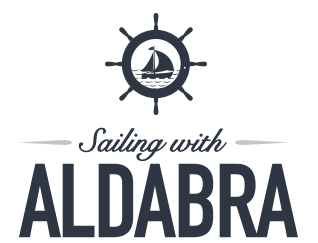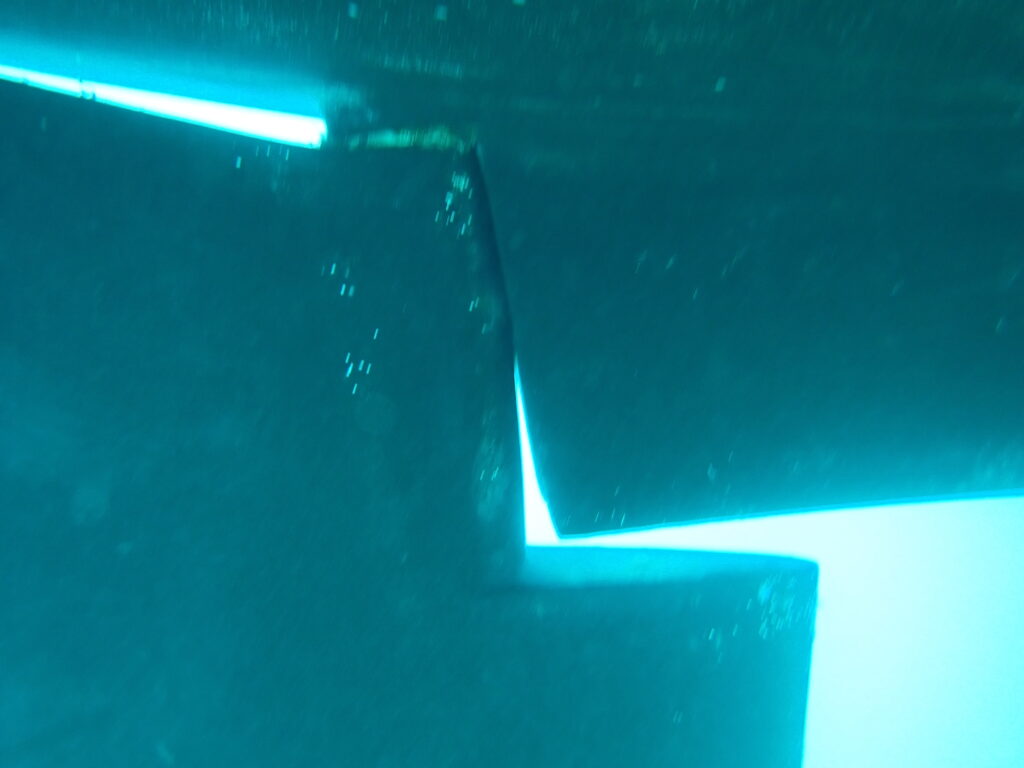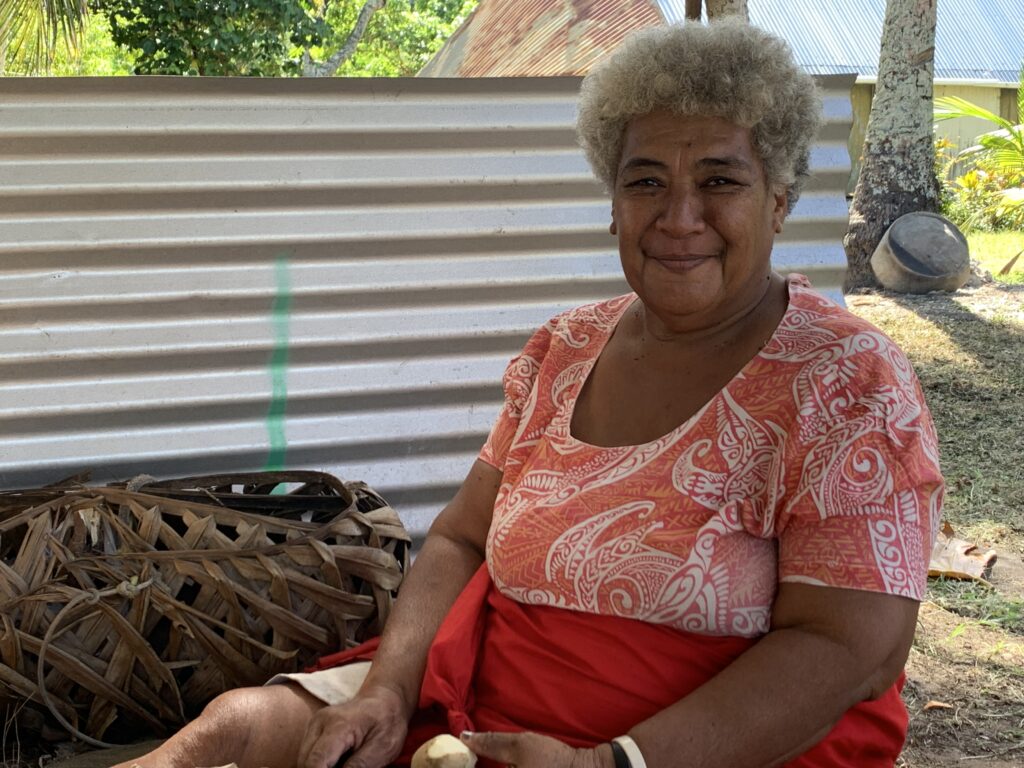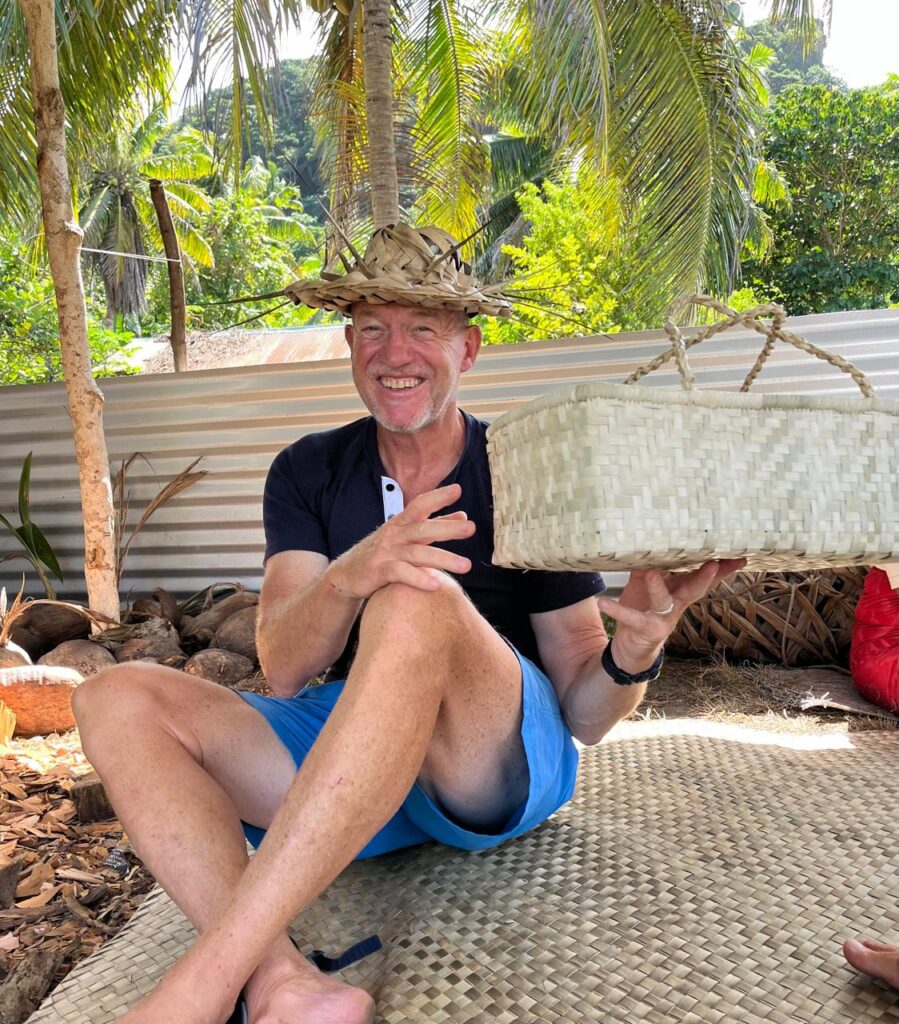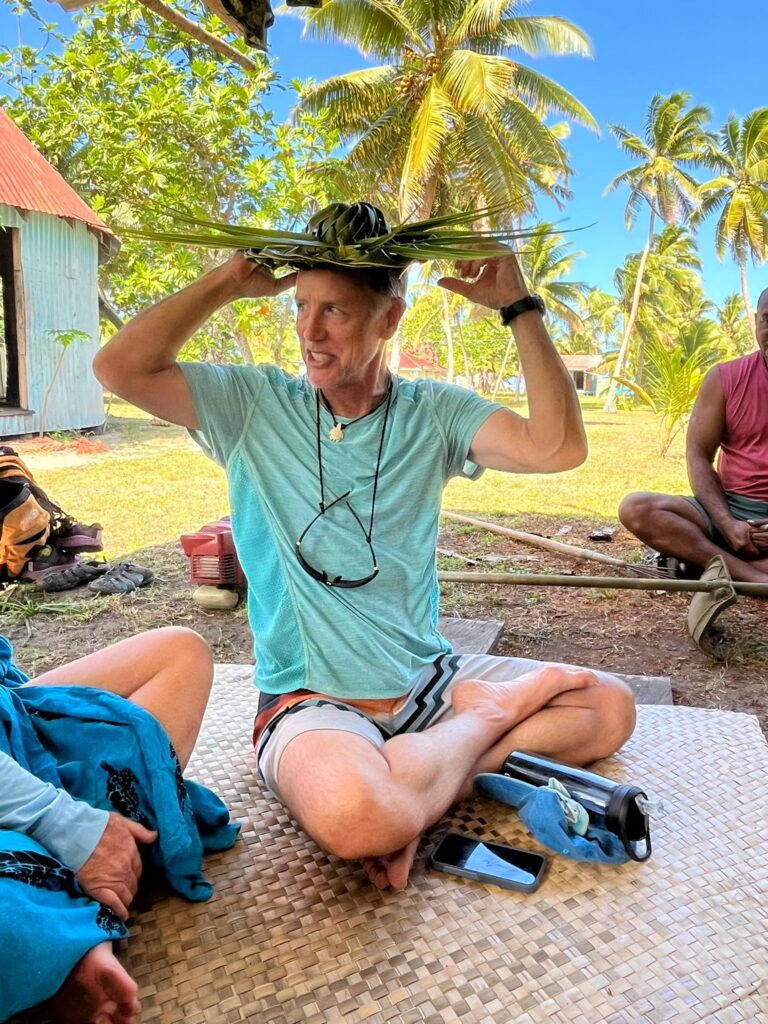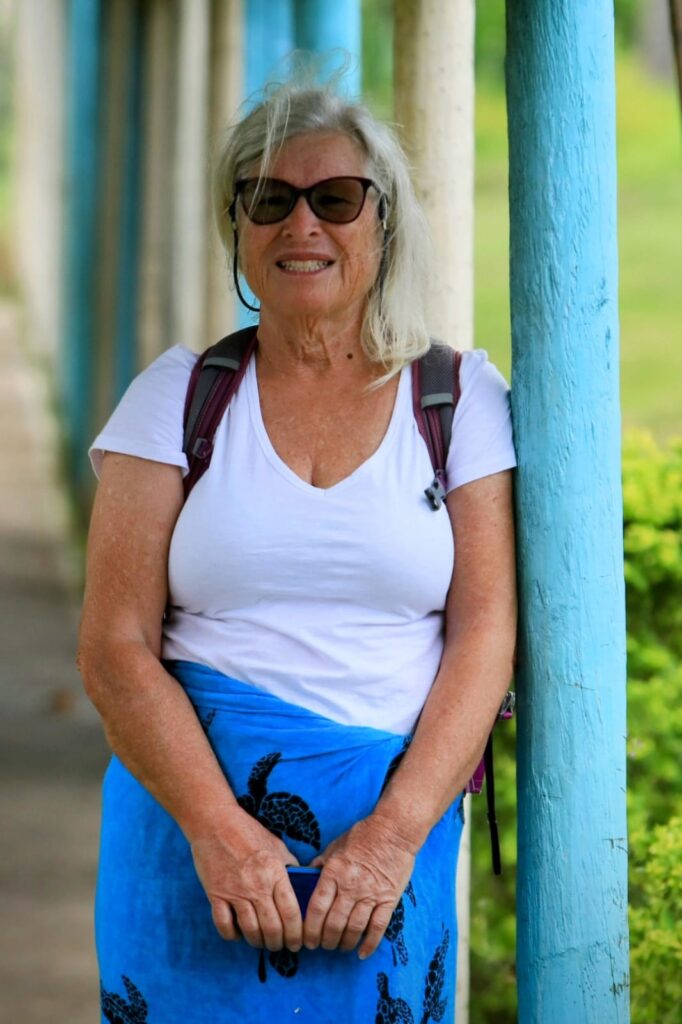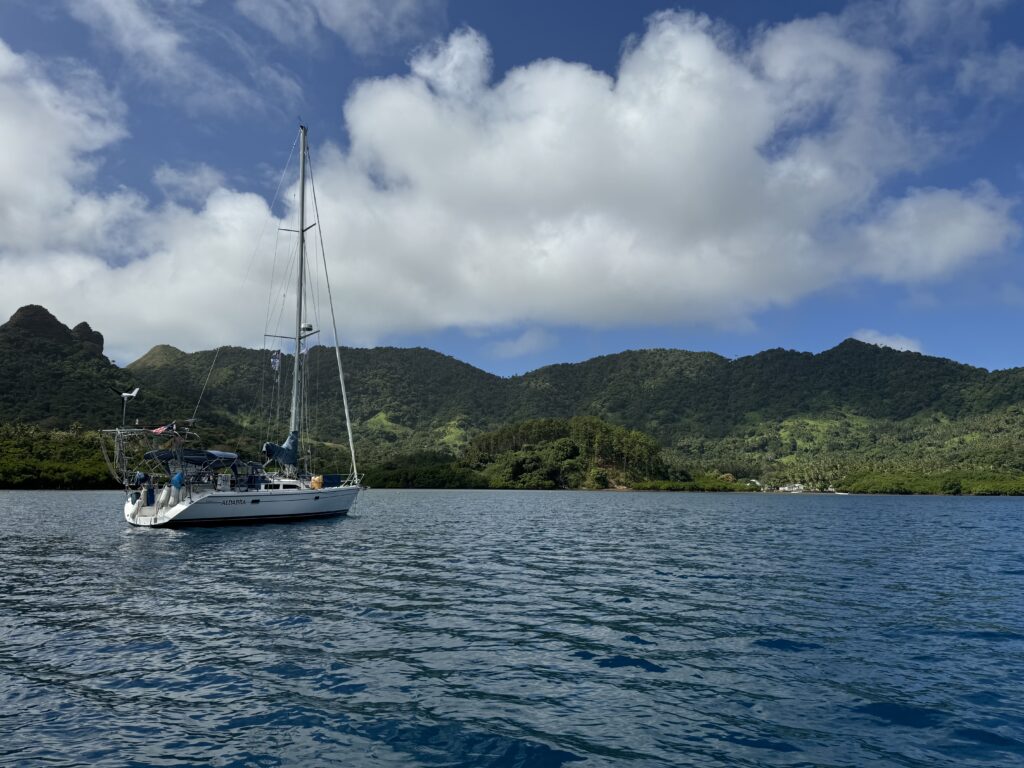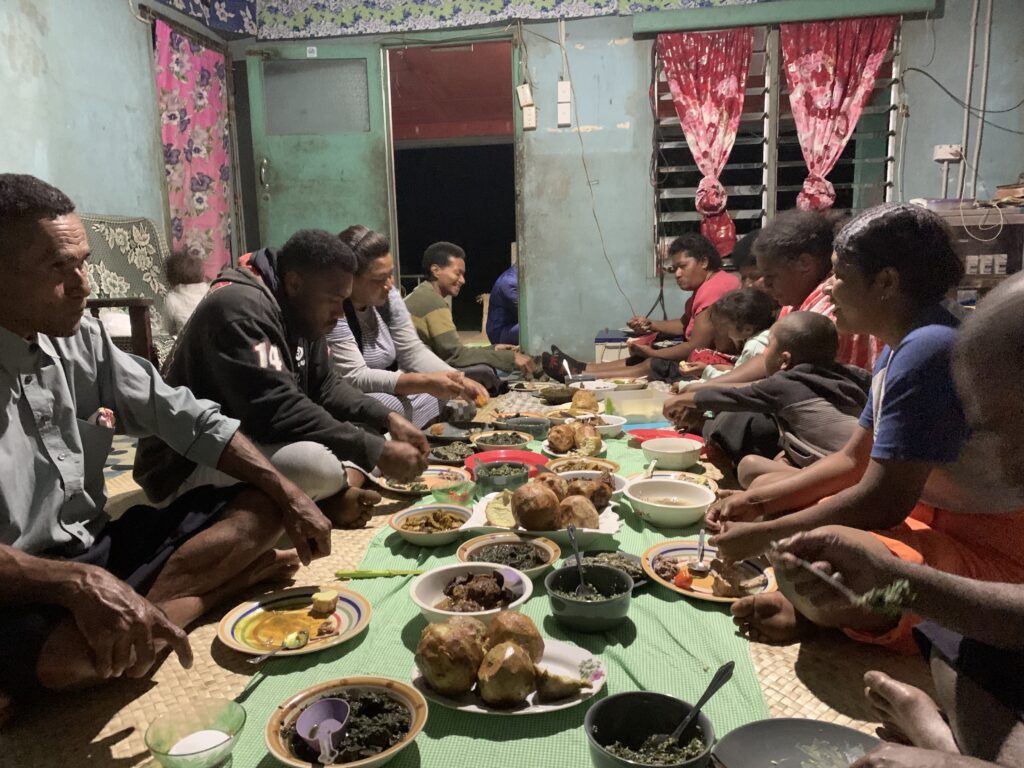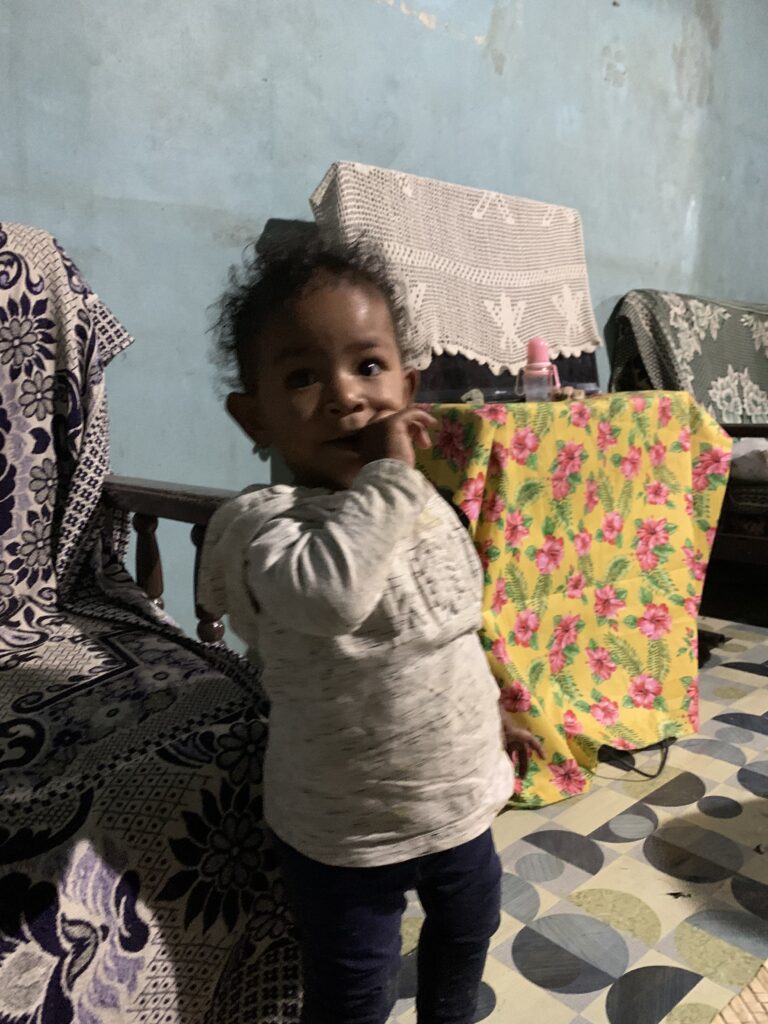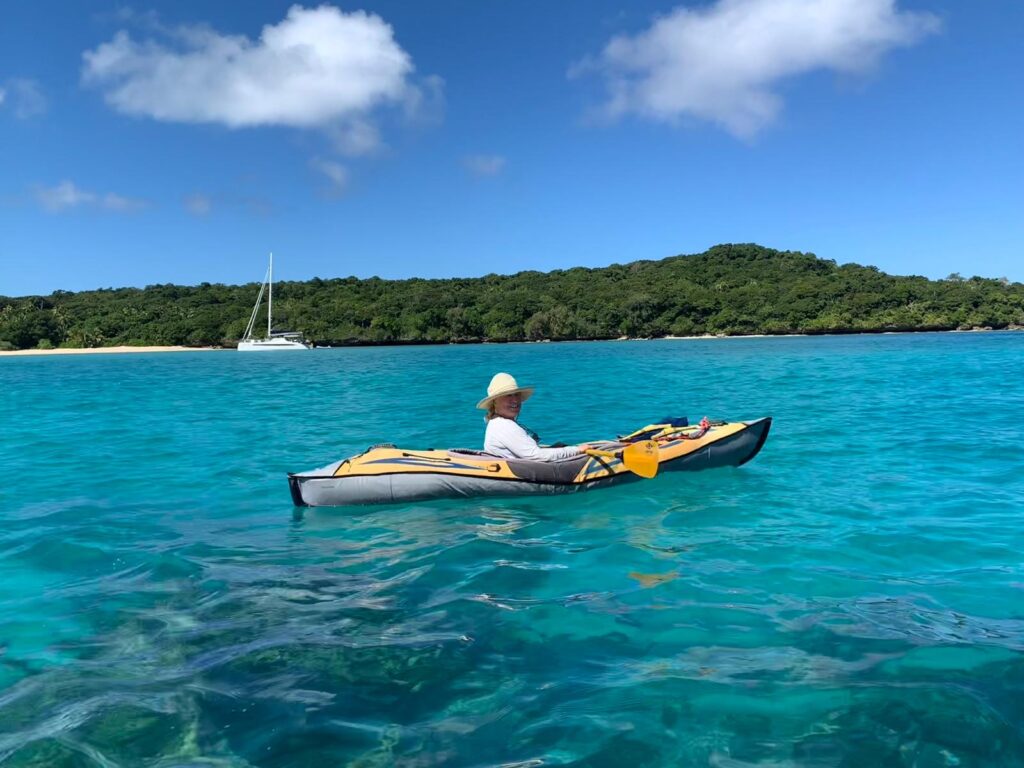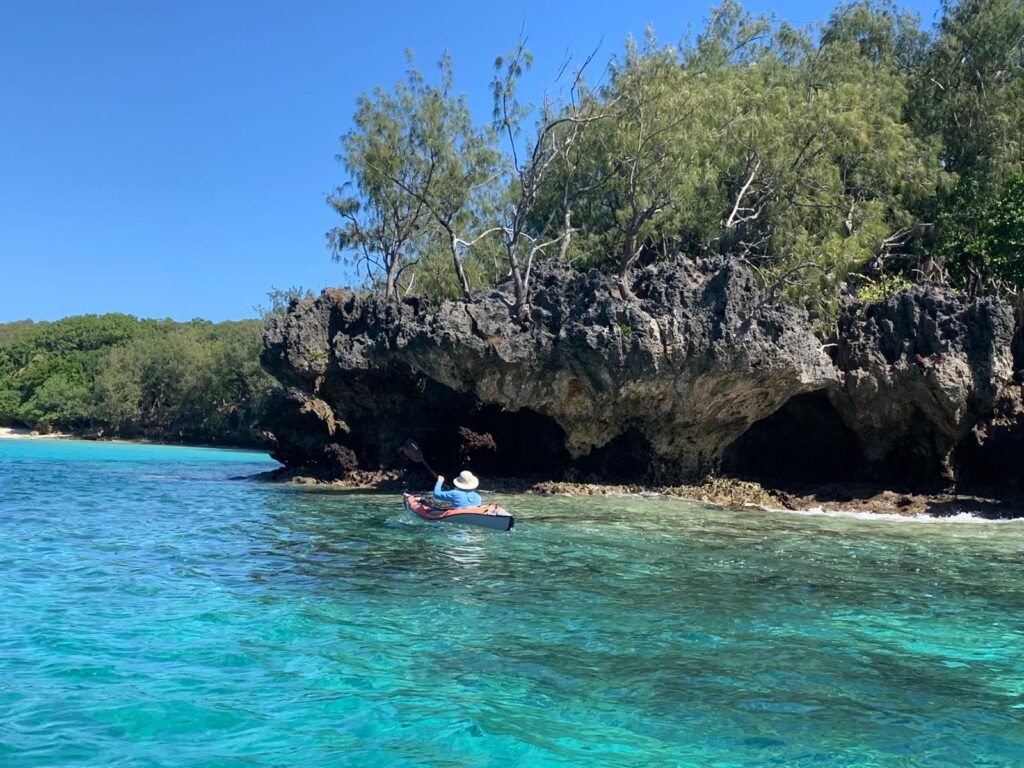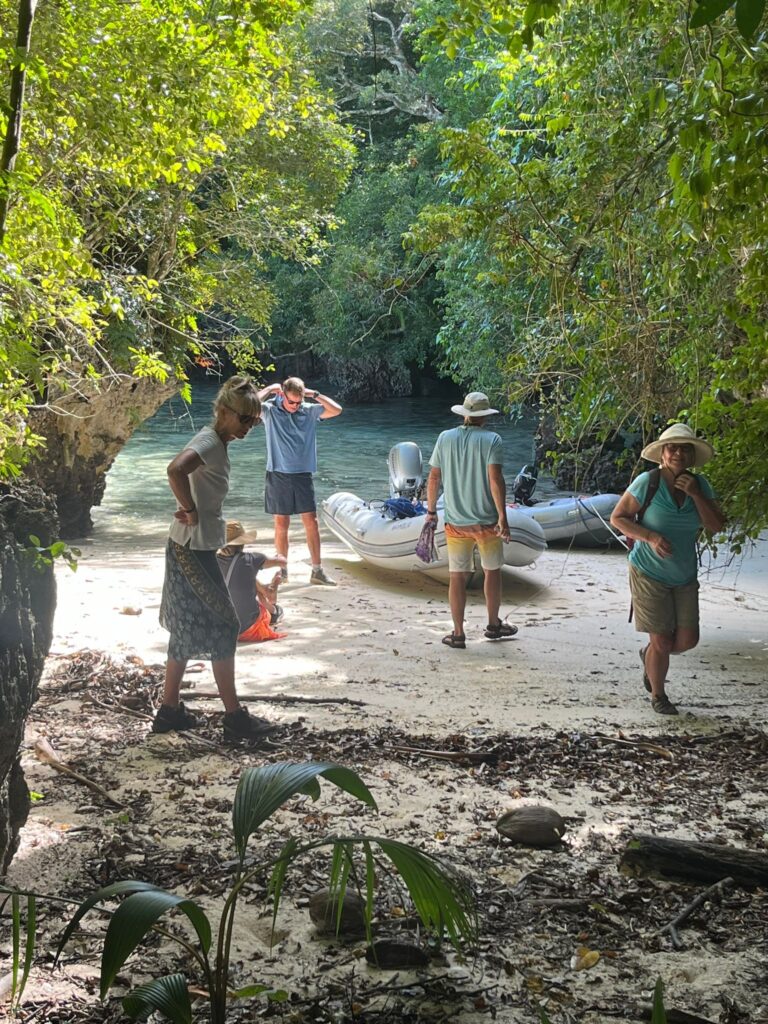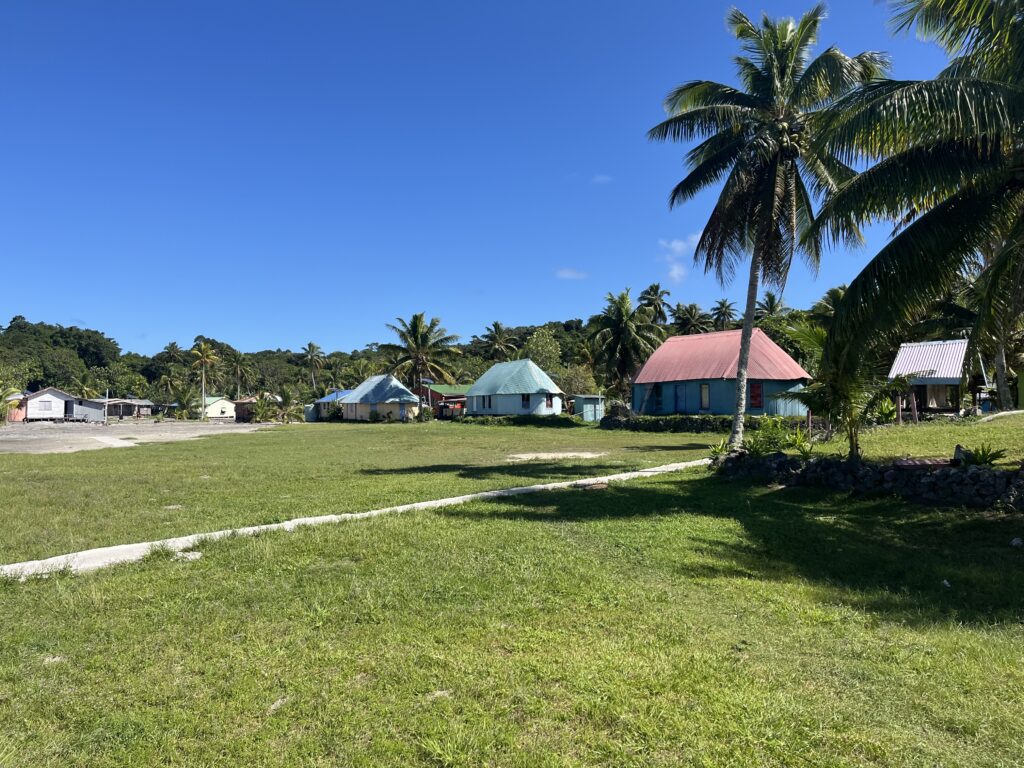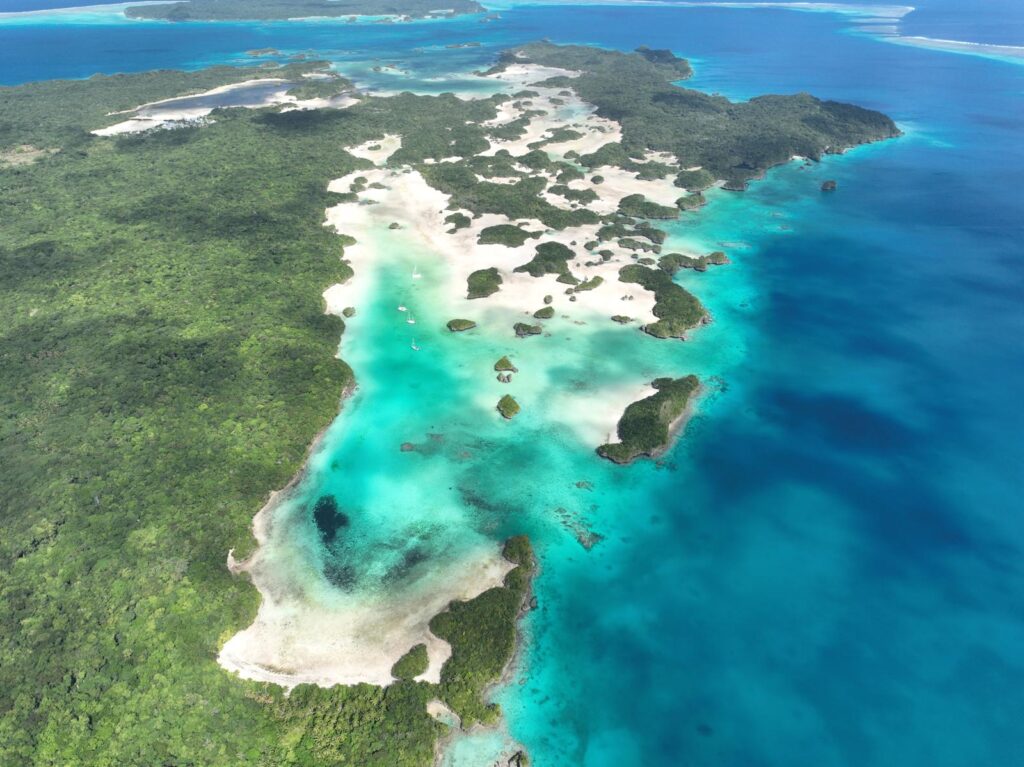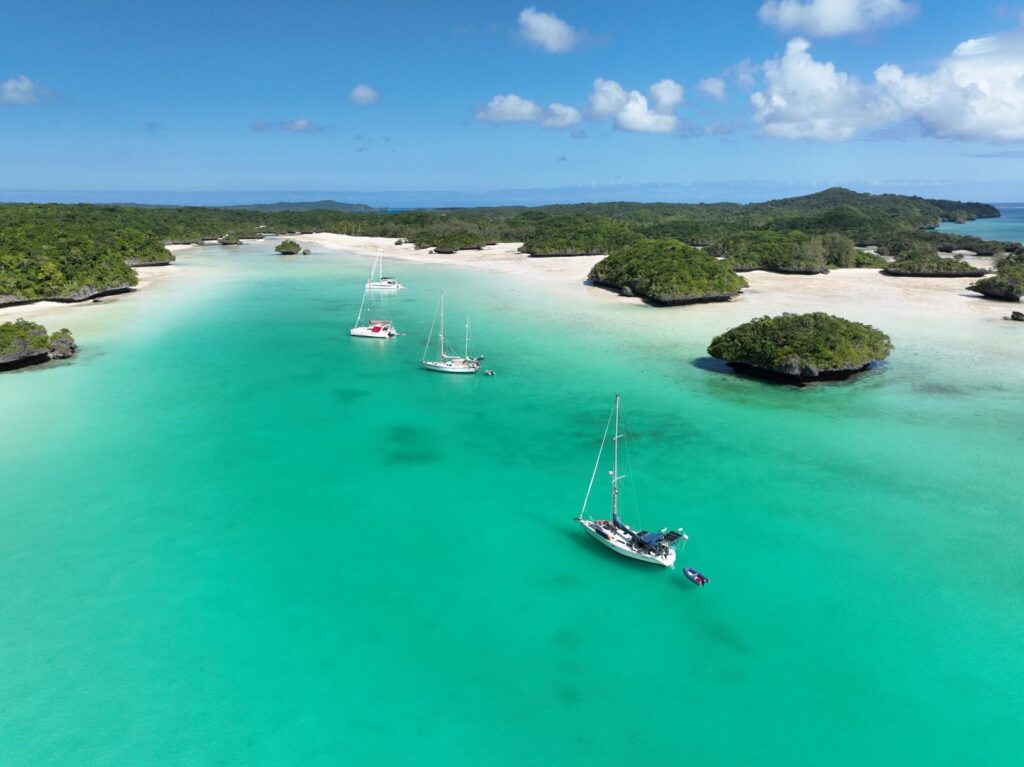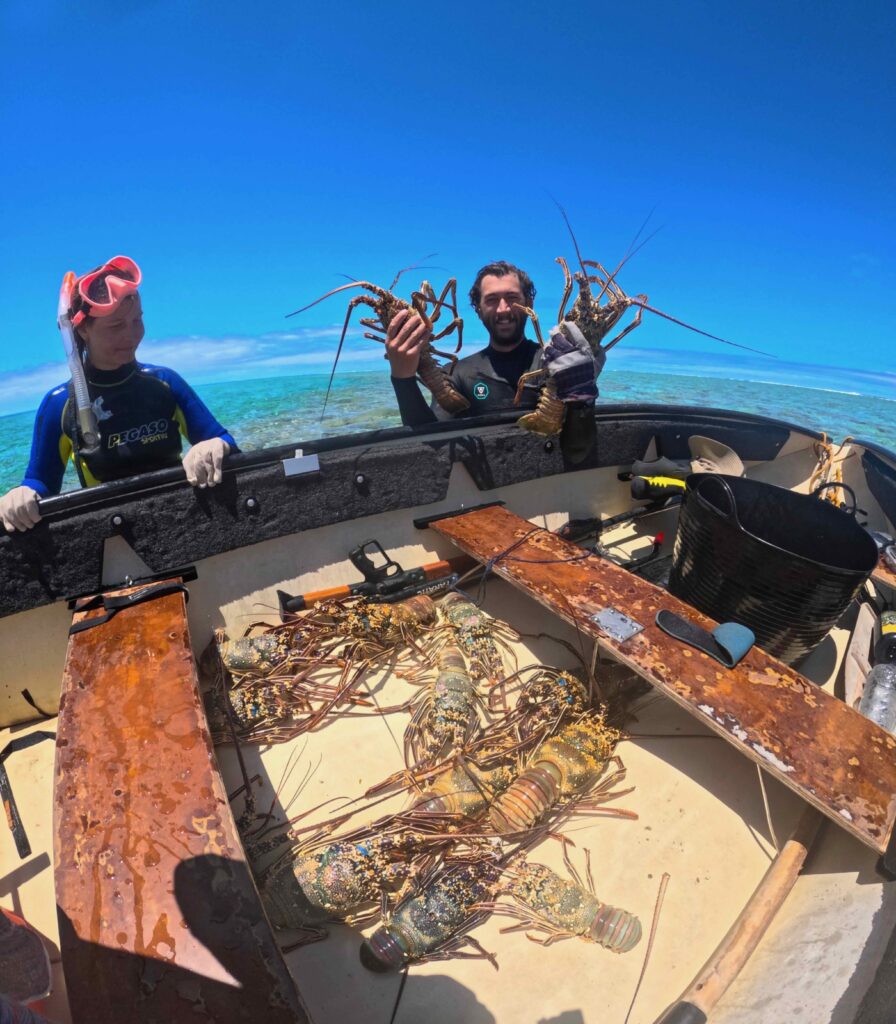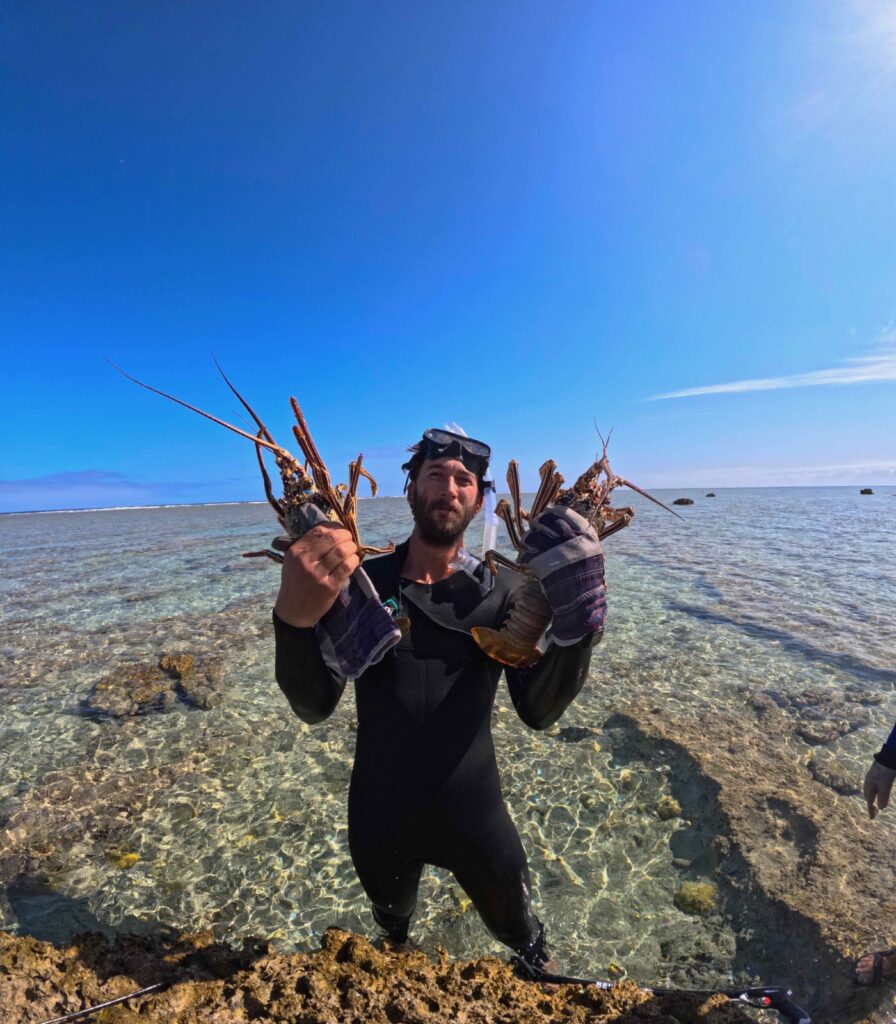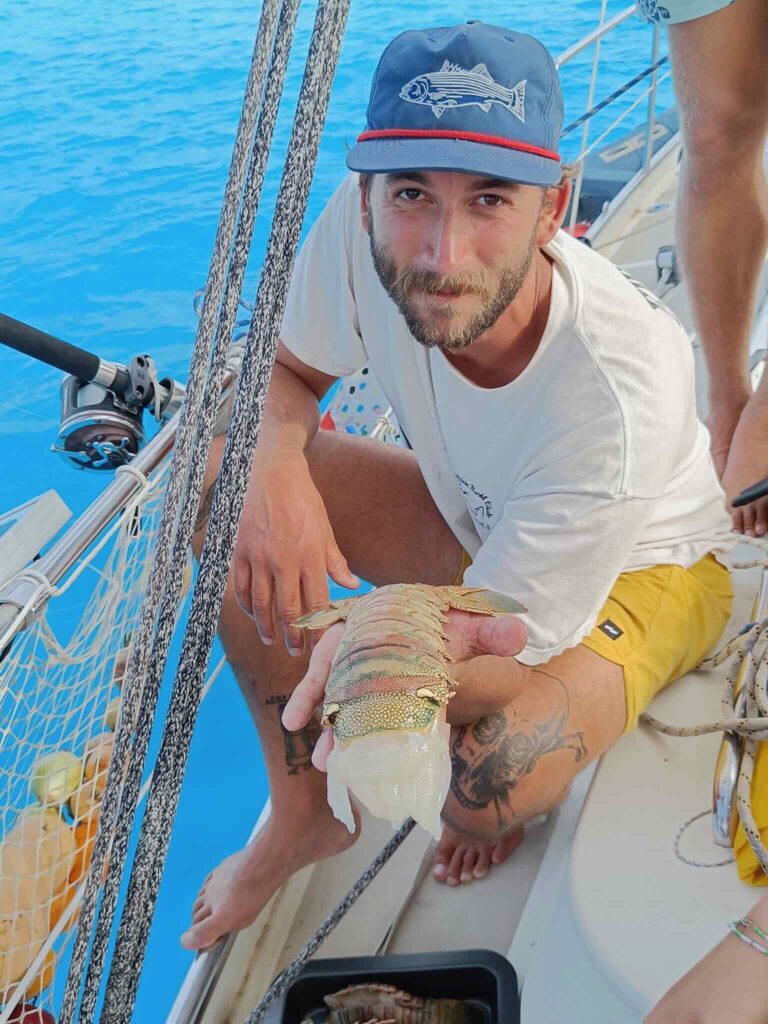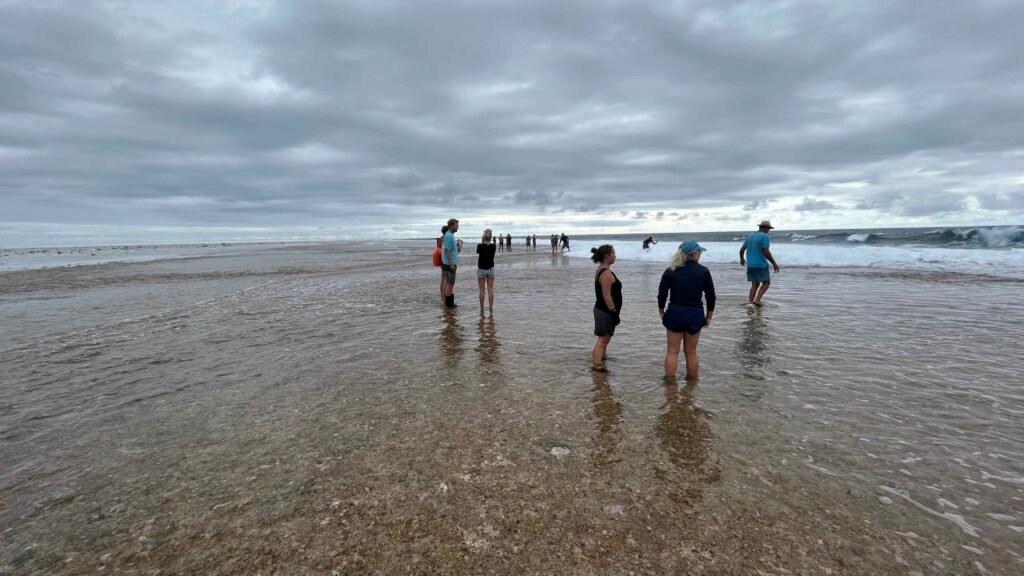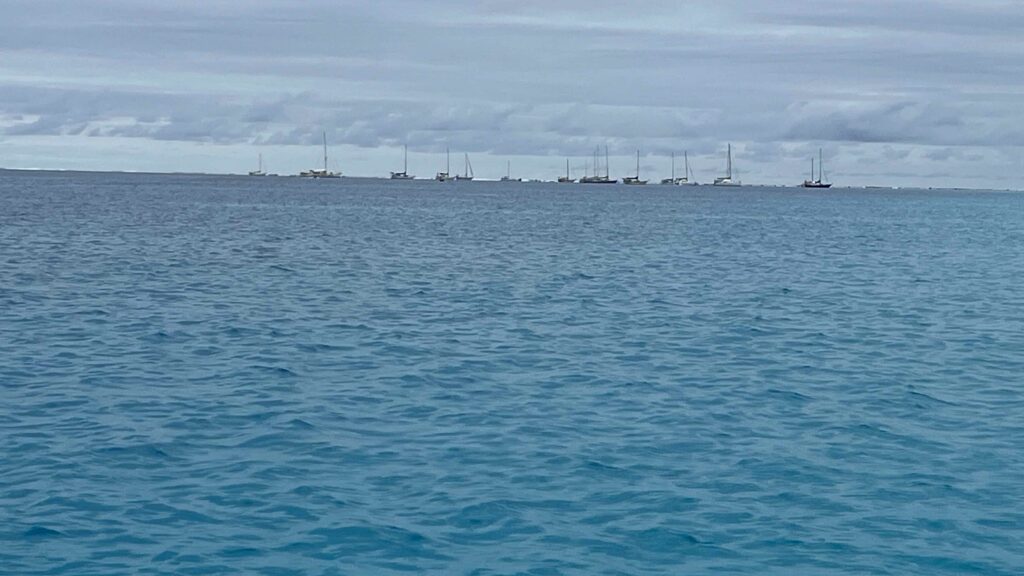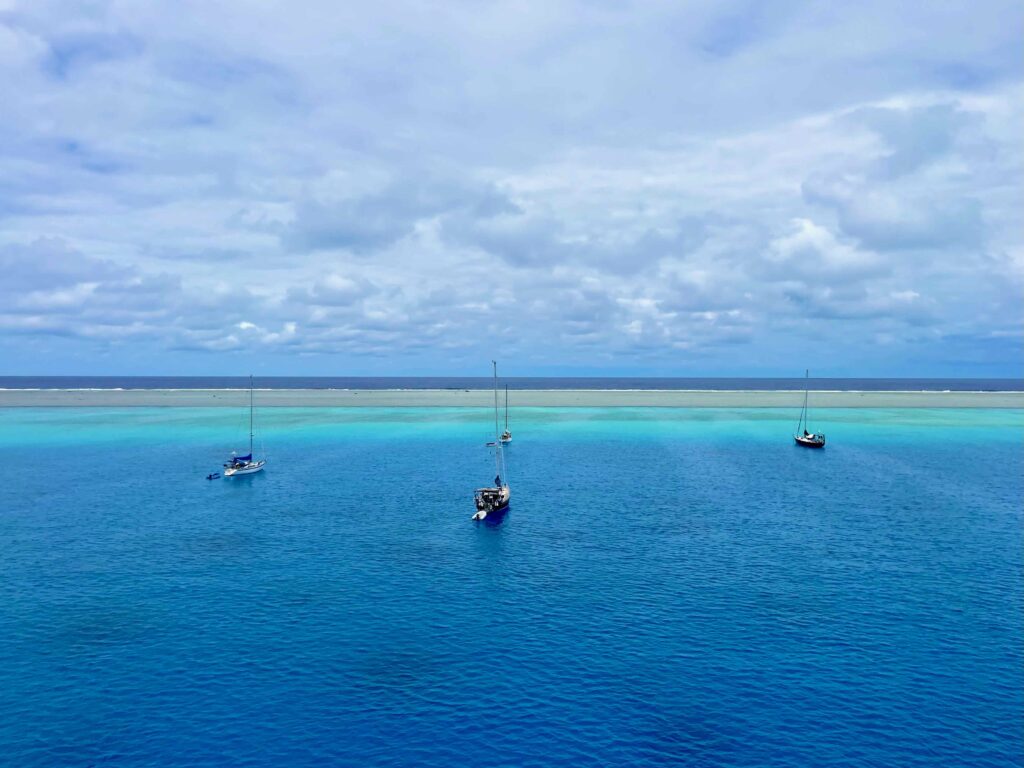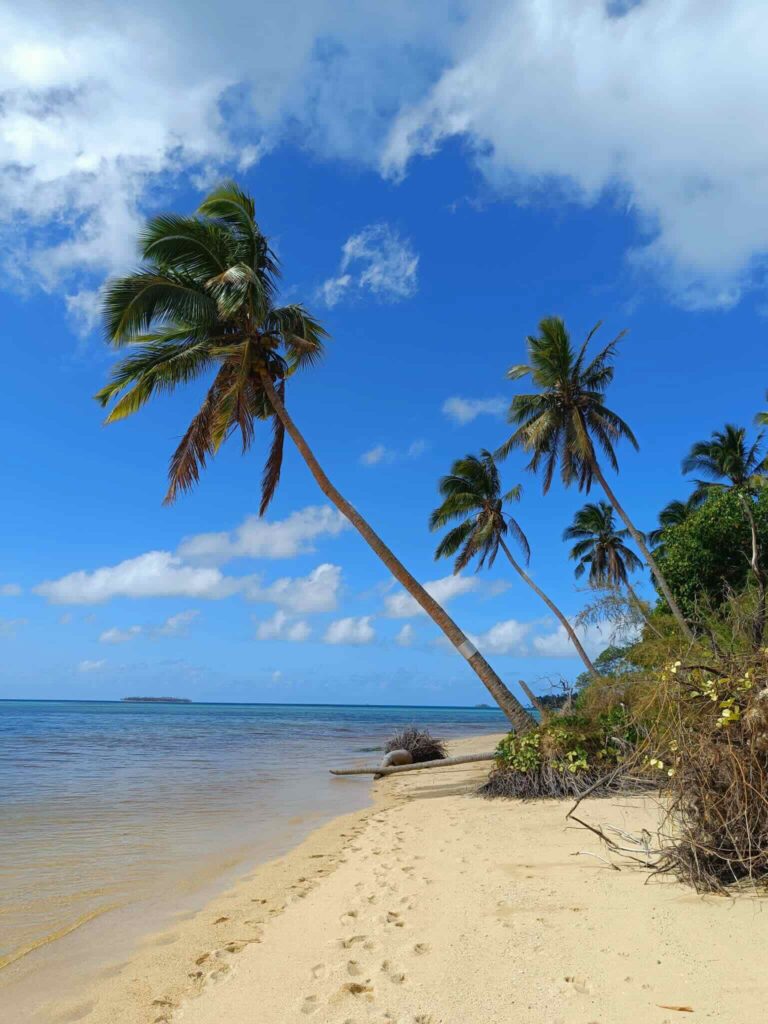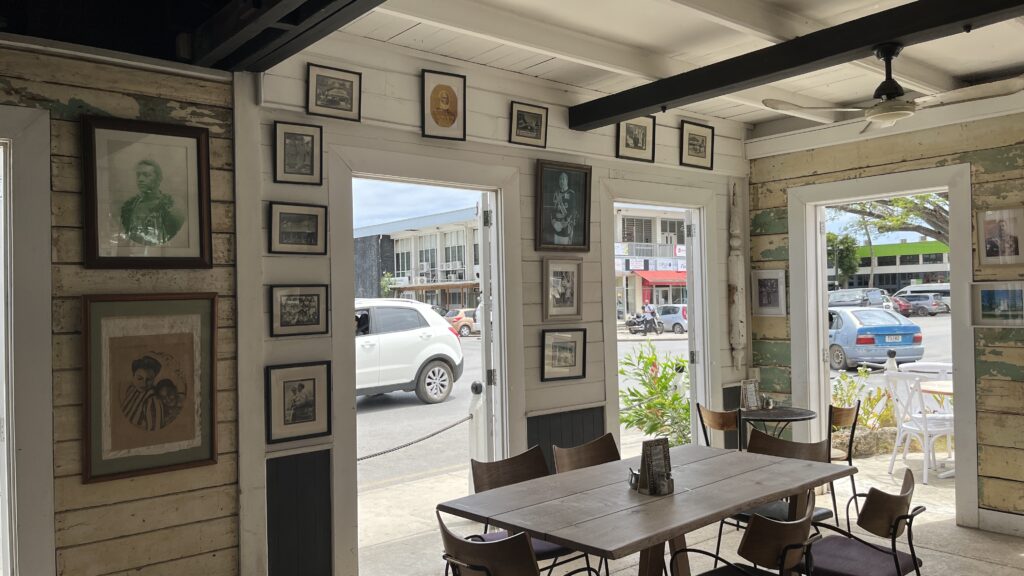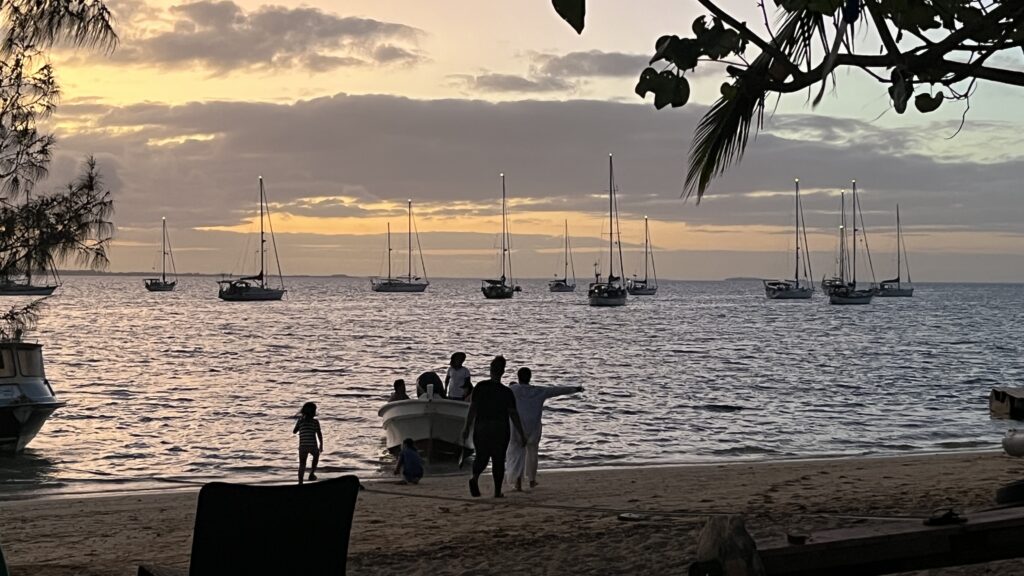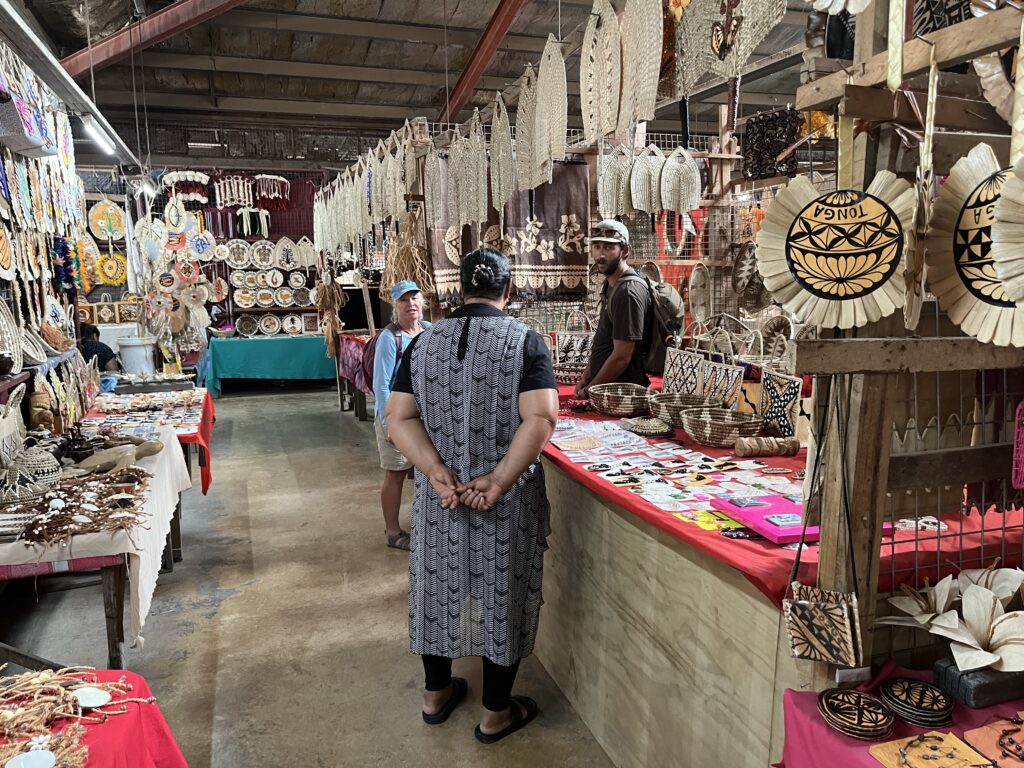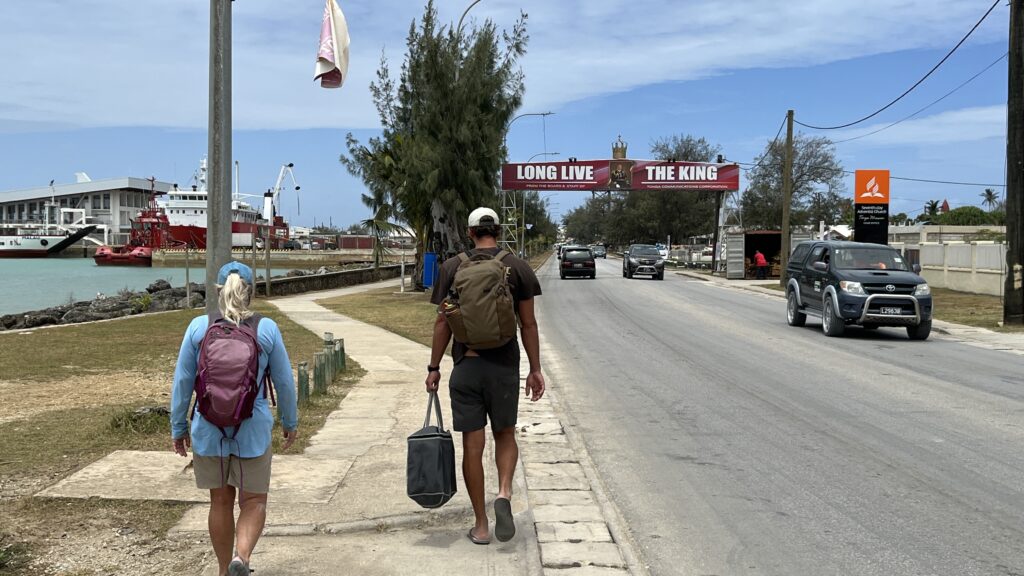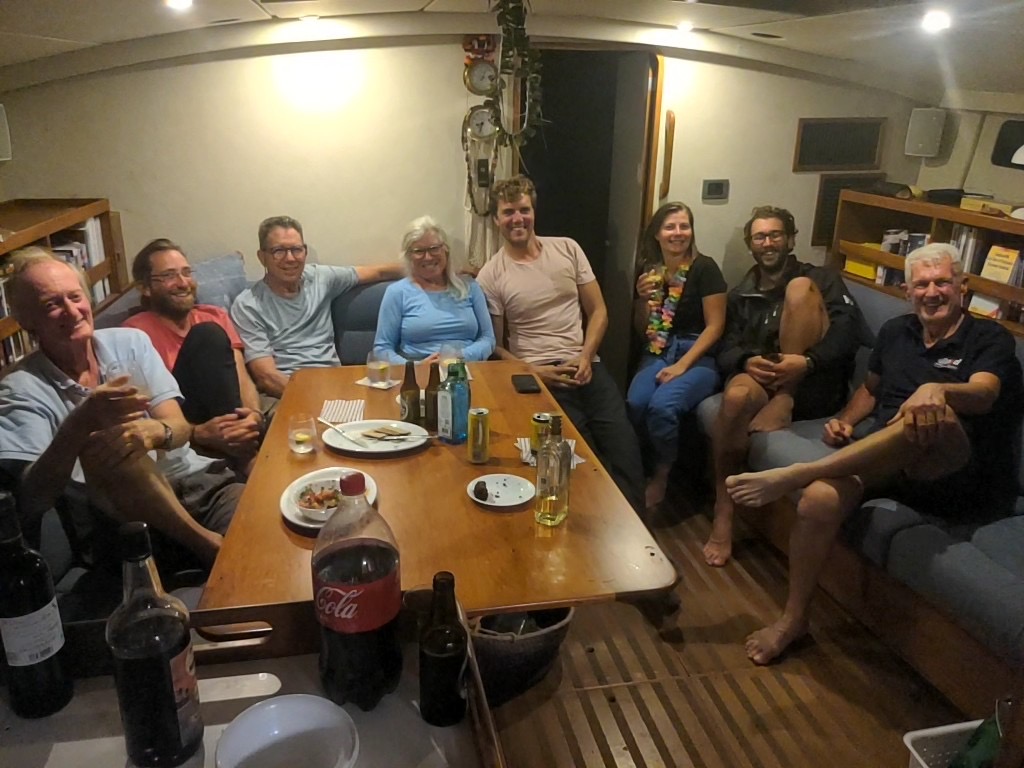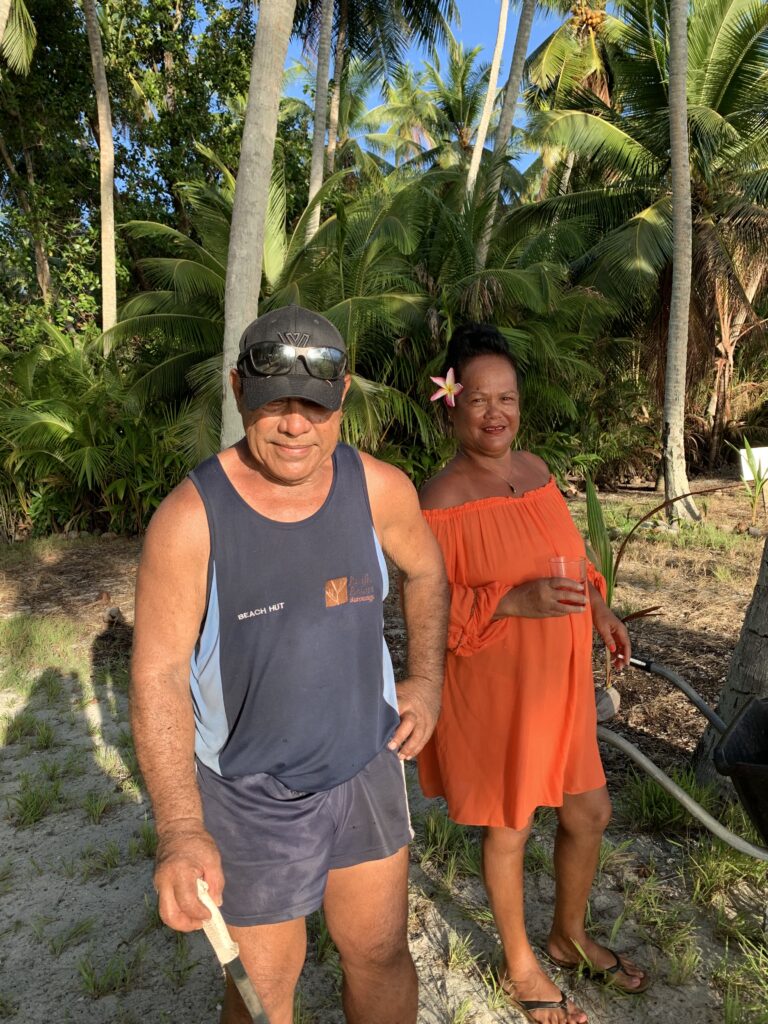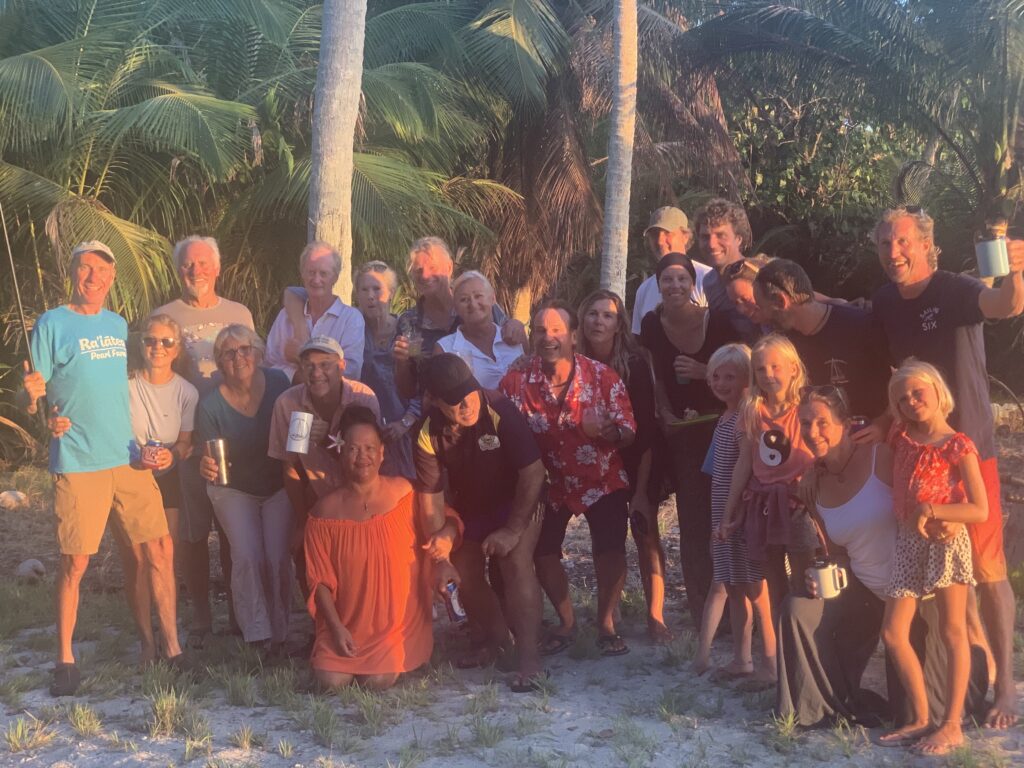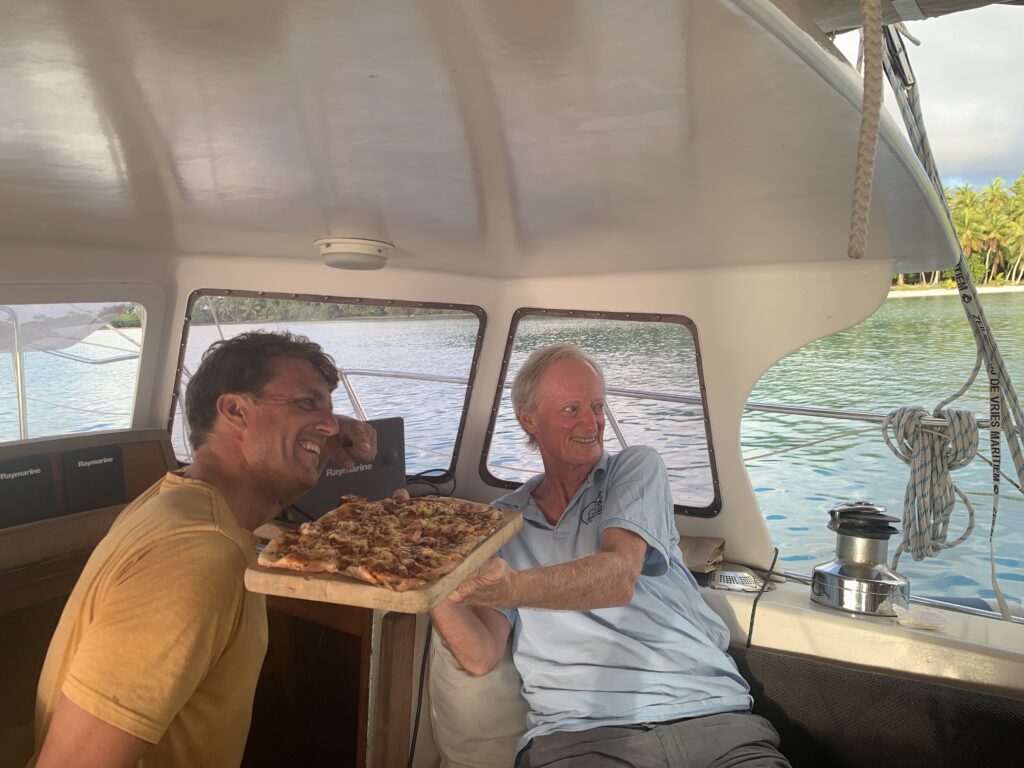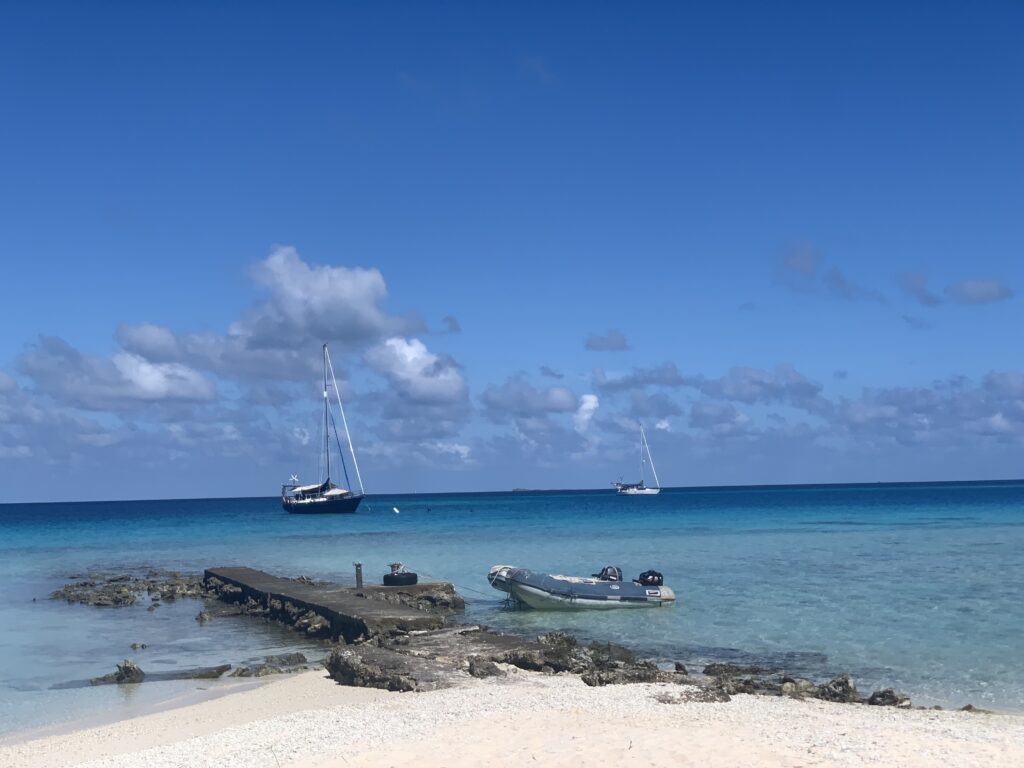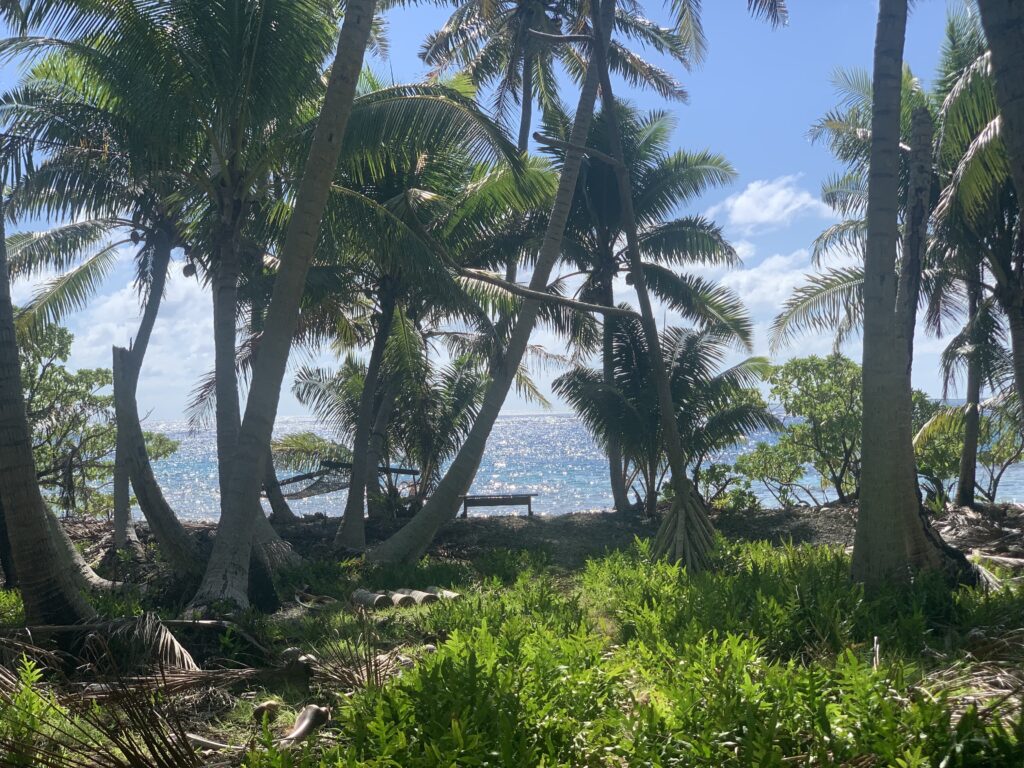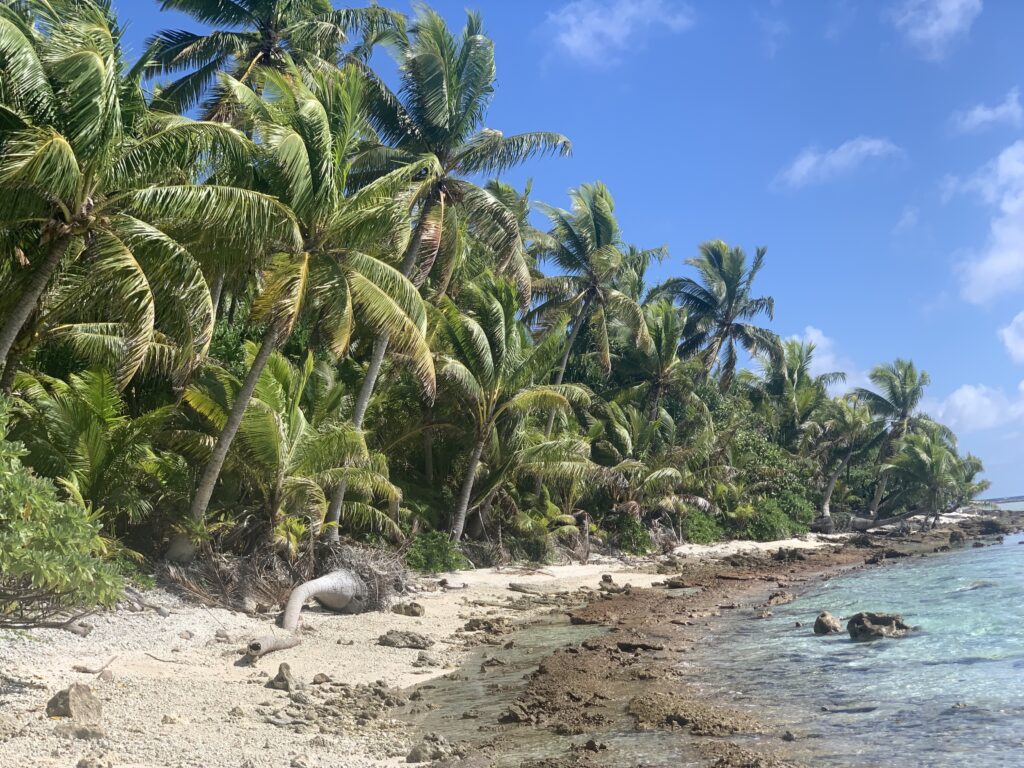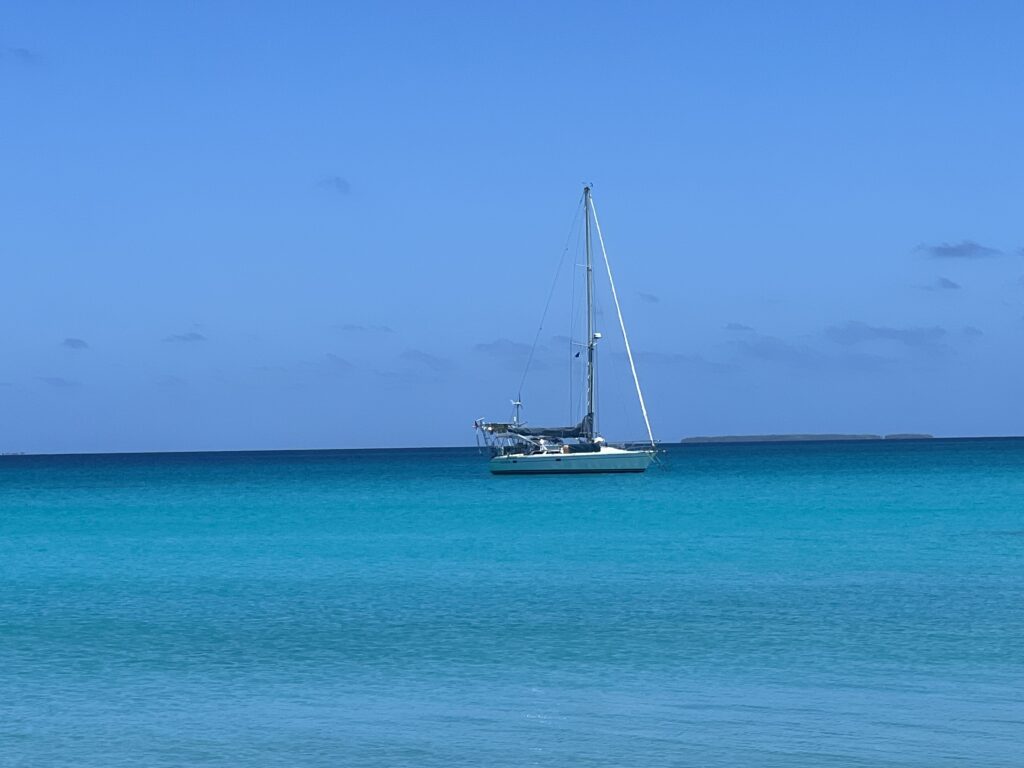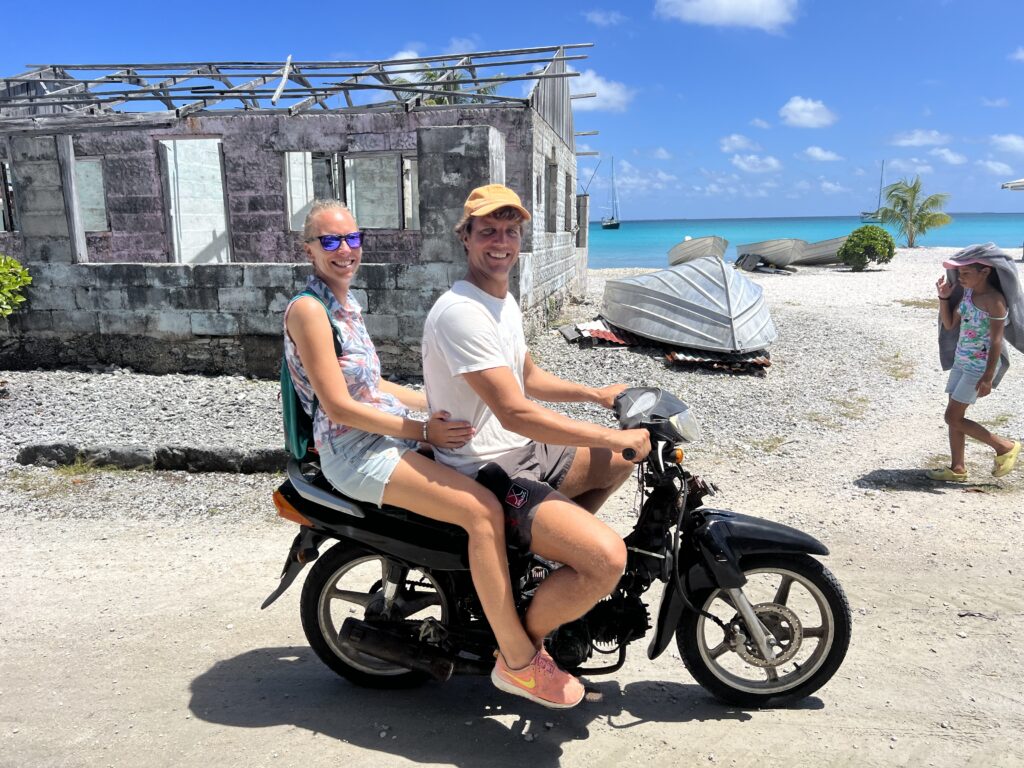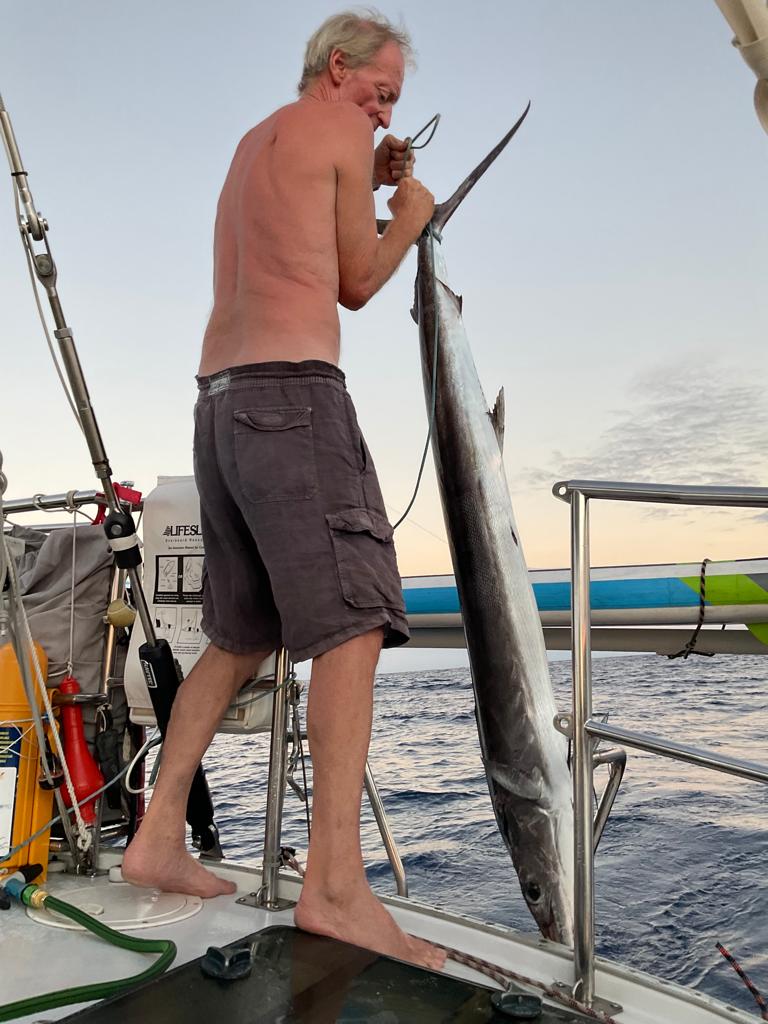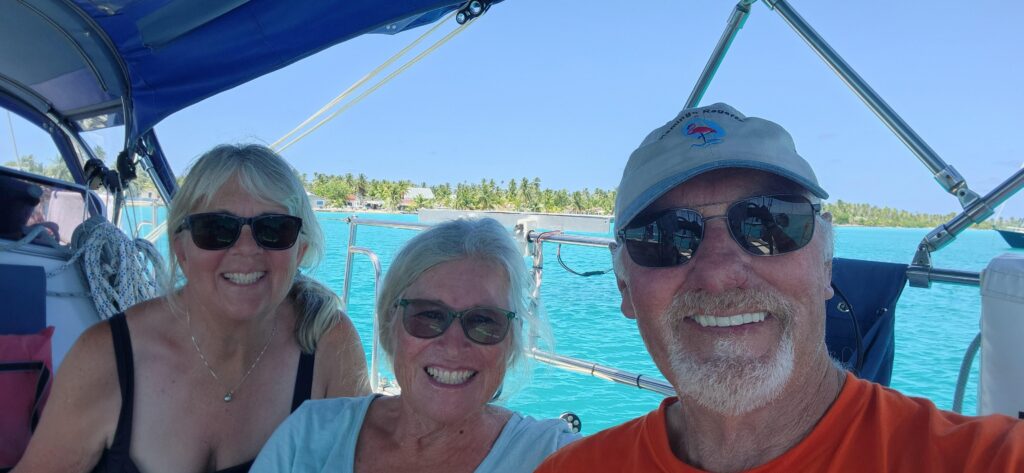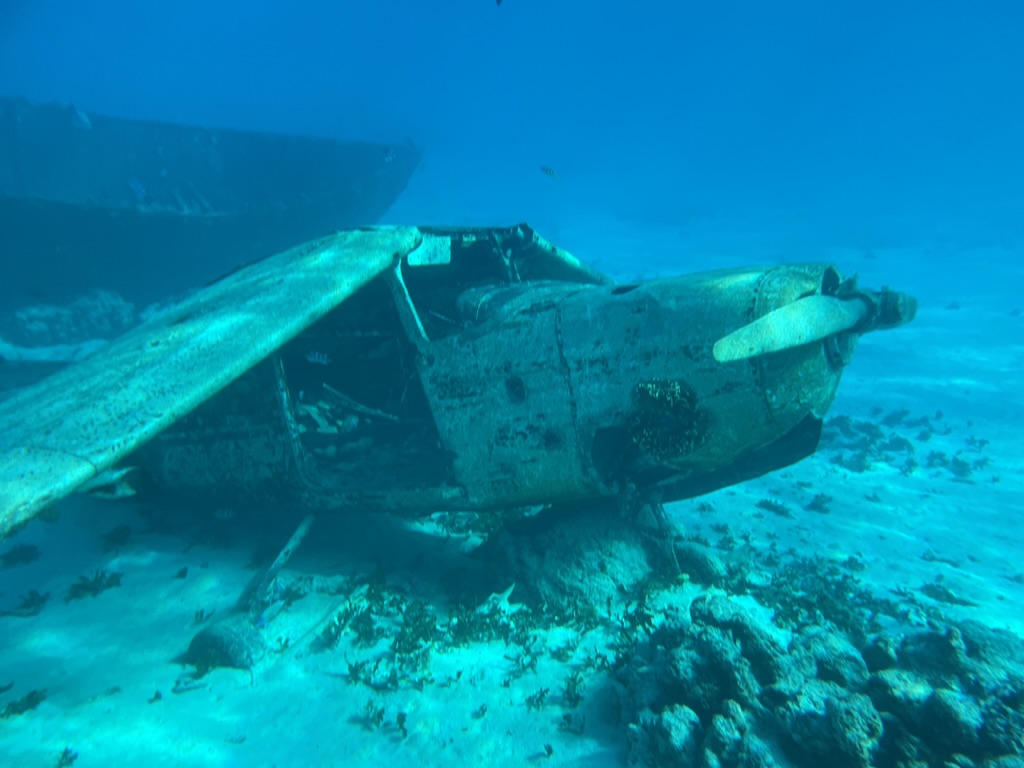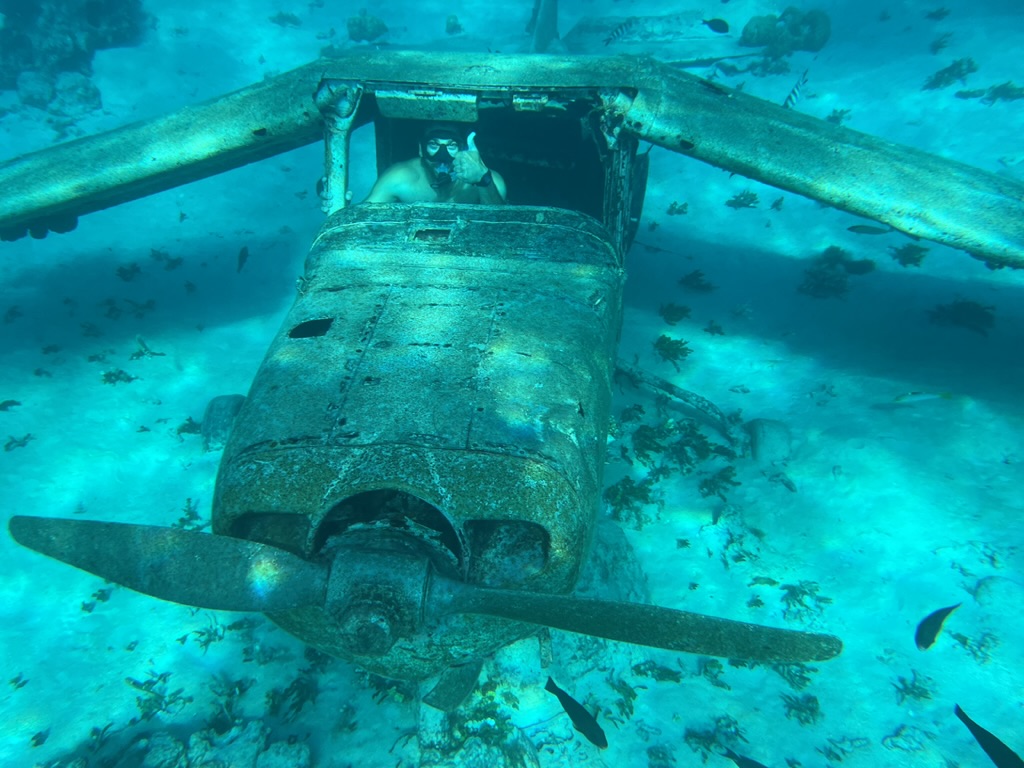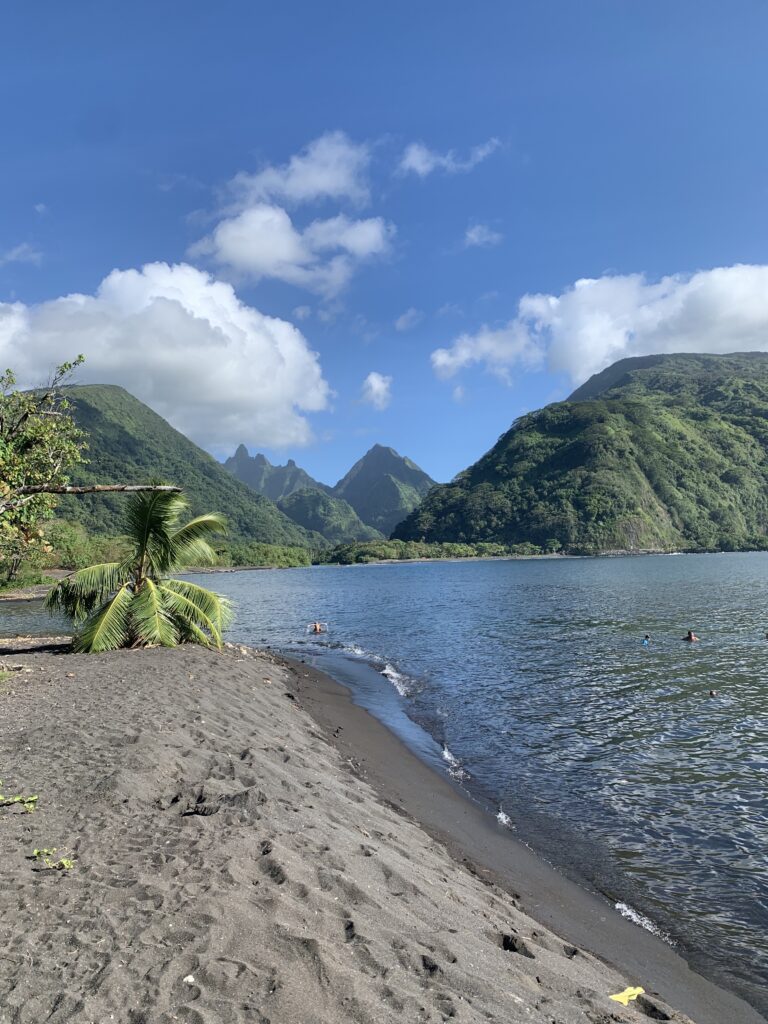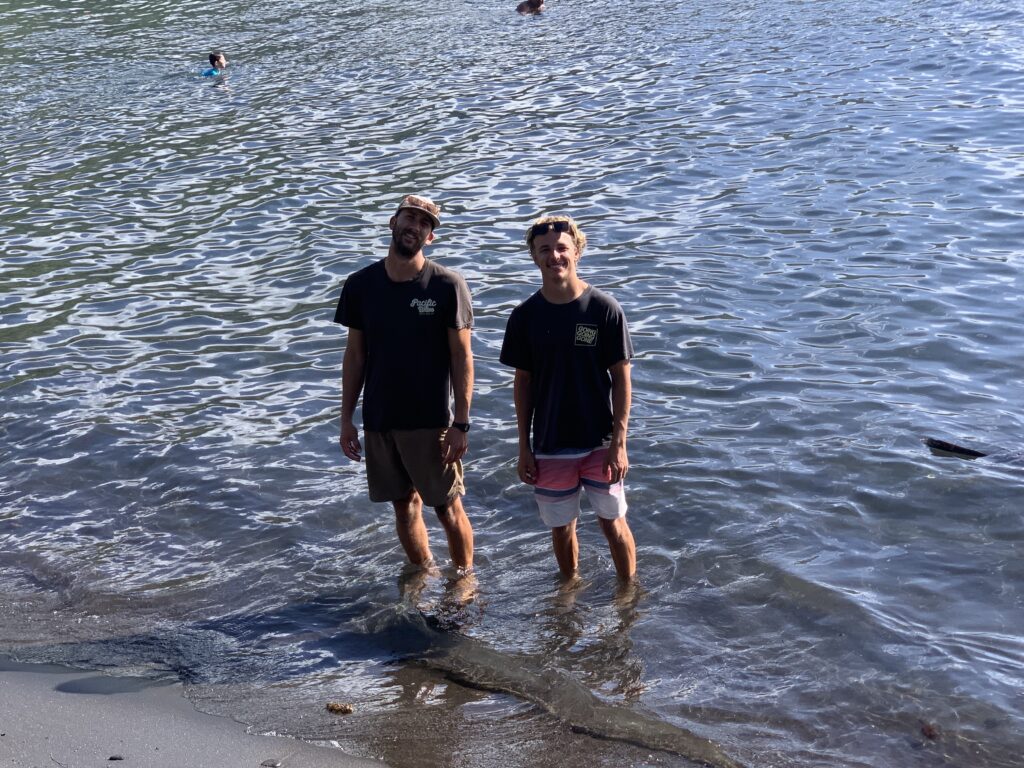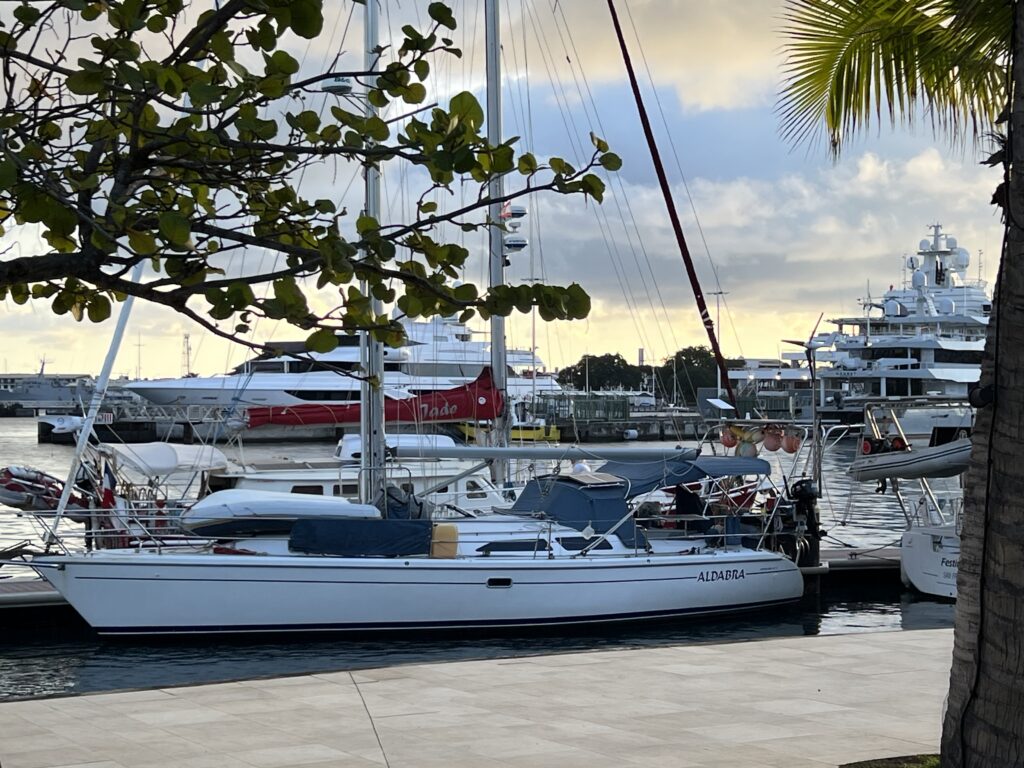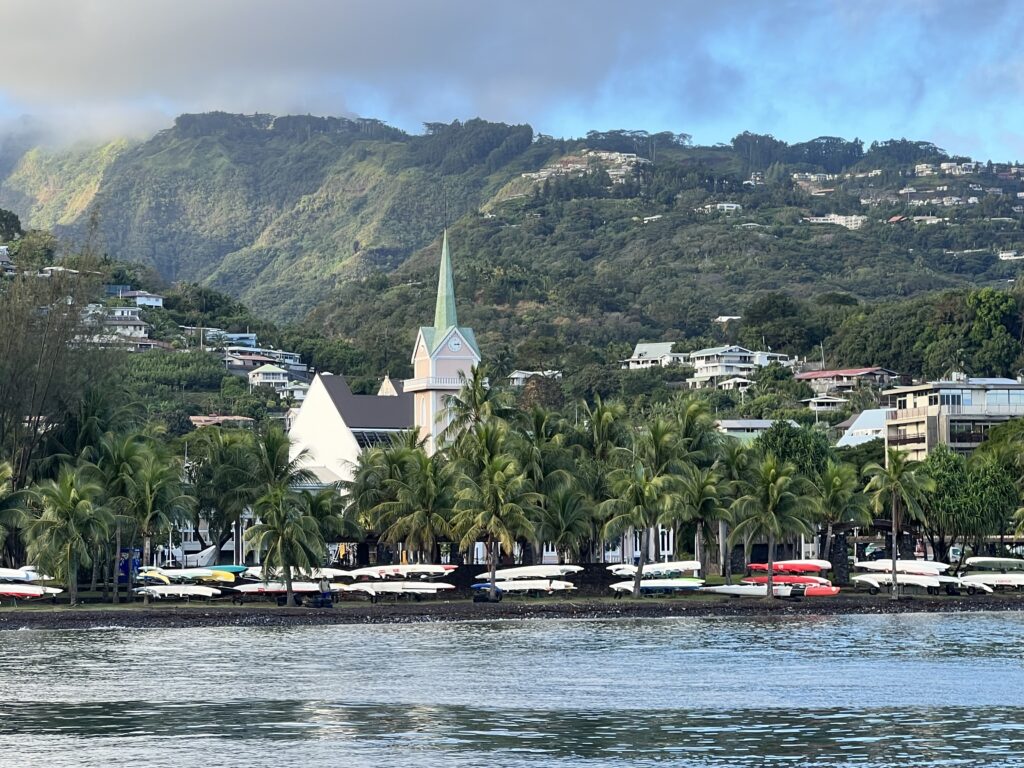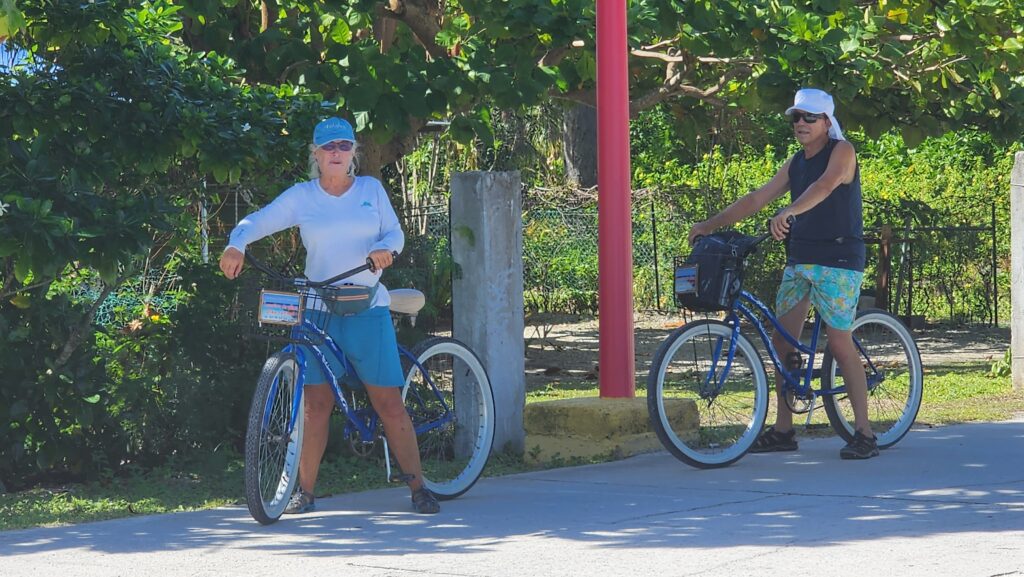The passage to Kadavu wasn’t too bad. The wind was light, from behind, at first and we motored for a couple of hours. But then the wind filled in and even came around to a beam reach. We hand steered all night, two hours on, two hours off. We rounded the top of the pass above the Great Astrolabe Reef around 4:00 a.m. Now in the protection of the reef, the winds and seas lightened up and we had to motor again. We headed to Daku Bay because I mistakenly thought that it was where the main village of Vunasei was. (We had told Thomas on Soarise that we would meet him at the village in the middle of the day.) As we arrived in a anchorage, we found Soarise and Thomas informed us that we were in the wrong bay, not the one with the village. So we anchored, slept for a couple of hours, and then followed Soairse around to the next bay south, where the village was. Both boats anchored and Jeff and I went ashore in the dinghy. We checked in at the police station and did some shopping, finding beer and some fruits and vegetables. Later that day, good friends of Thomas’, Samedhi and Picasso arrived.
The next day, we all went to shore. Jeff and I found some more groceries and a place for lunch take-out. The other three boats explored on their own. Having re-supplied Aldabra, Jeff and I brought up the anchor the next day, on Wednesday, August 21, and sailed and motor sailed back north and inside the reef to Vurolevu Island. It was a small anchorage and a bit crowded, but we managed to squeeze in.
Vurolevu is known for giant Mantas swimming through the pass and into the anchorage and we were keen to see them. Soarise also came in and anchored there and Picasso and Samedhi anchored nearby at Ono Island. The next morning, we took the dinghy across to a nearby Buliya Island to do sevusevu so that we could gain permission to be at Vurolevu.
The village on Buliya contrasted a bit with the remote villages in the southern Lau group. The houses and buildings were more substantial, probably because building supplies are more accessible. But also, the villages had many more visitors, from the few resorts in the Great Astrolabe Reef area and smallish cruise ships. (The village most likely gets money for the visits and most of those tourists buy handicrafts.) So our visit was greeted politely but with very little interest. It didn’t help that Tony, who hosted us for sevusevu, had been up all night, fishing. We stayed and chatted for less than a half hour and then got back in the dinghy as a couple of tour boats arrived to an enthusiastic greeting.
The ride back to Vurolevu was rough because of wind and chop. When we got back to the boat, we tried exploring around the point where mantas might be expected. It was really too rough to be out there but Jeff did spot one manta as we were getting back in the dinghy. That night was a windy, uncomfortable night in the anchorage, which was not that protected. As we were thinking about moving to another island, Picasso and Saorise and Samedhi let us know that they were headed to another island, and we followed them to Namara Island.
The first three boats had good anchor spots. We were a bit farther out and less protected. But it was a beautiful spot, used by resorts for picnics. You could walk over a hill to the other side and stroll a long beach at low tide. That night we joined the other boats for a cookout on the beach. It was nice to get to know Samedhi better, whom I had met in the Tuamotus. And it was nice to spend time with Mike and Daisy and their kids on Picasso. I had seen them in the Tuamotus on their previous boat, Traveler, but I didn’t get to know Traveler or Soarise until we were all in Tonga together.
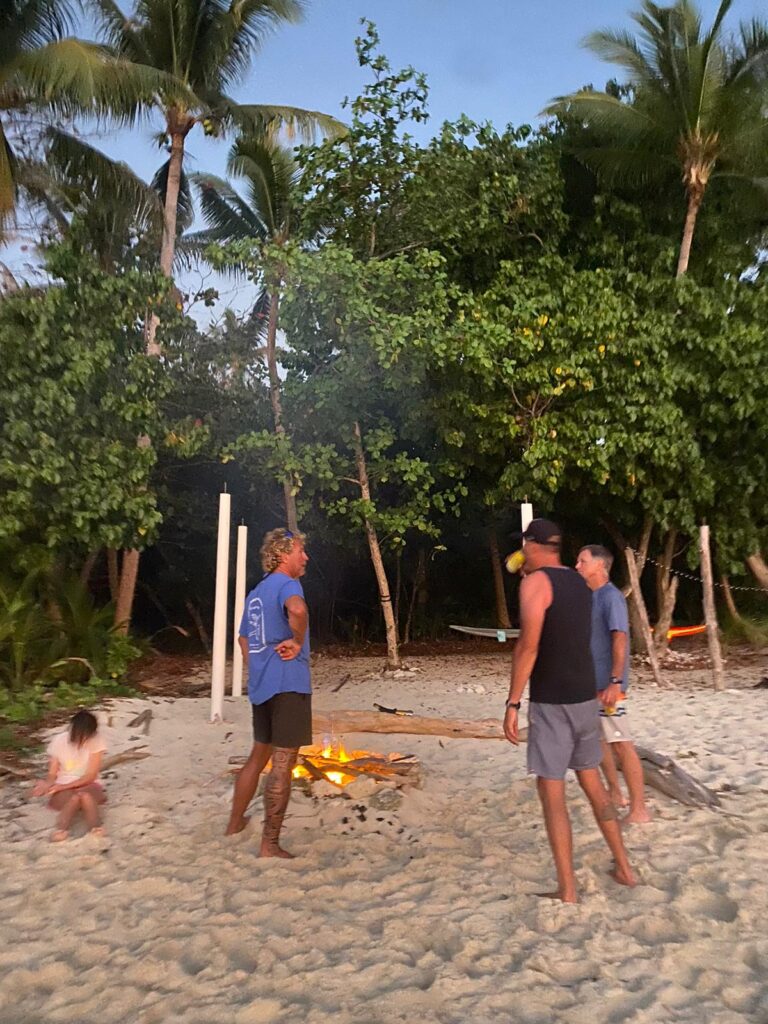
Bonfire on Nomara Island

Chatting with Thomas, Daisy and Jeff
On Saturday, August 24, we pulled up anchor and sailed to Dravuni Island. RaLa and Womble were there, having sailed down from Savusavu. The anchorage was calm with a nice shallow sandy bottom. We went ashore to do sevusevu, which was extremely cursory, because this village was visited frequently by a cruise ship and they all made their money from those visits. We were of no interest at all. But we were welcome to hike on the island, and we happily did that. We hiked to the top of a lookout and could see the eastern side of the Great Astrolabe Reef. The view was spectacular.
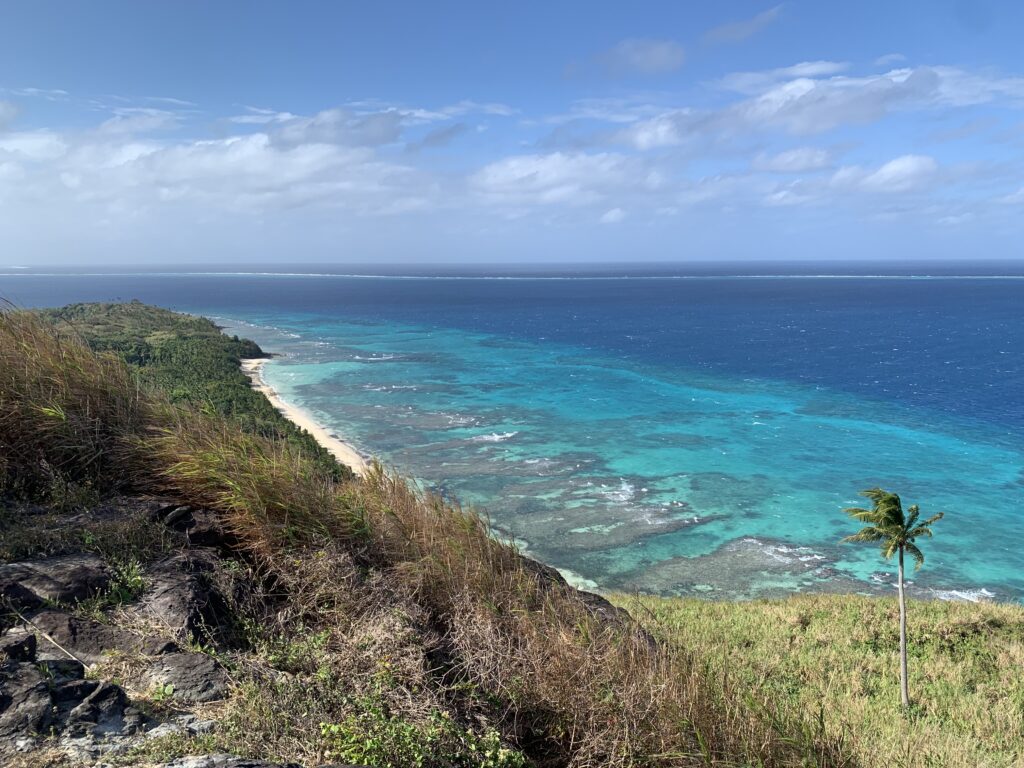
Looking east from the top of Dravuni Island
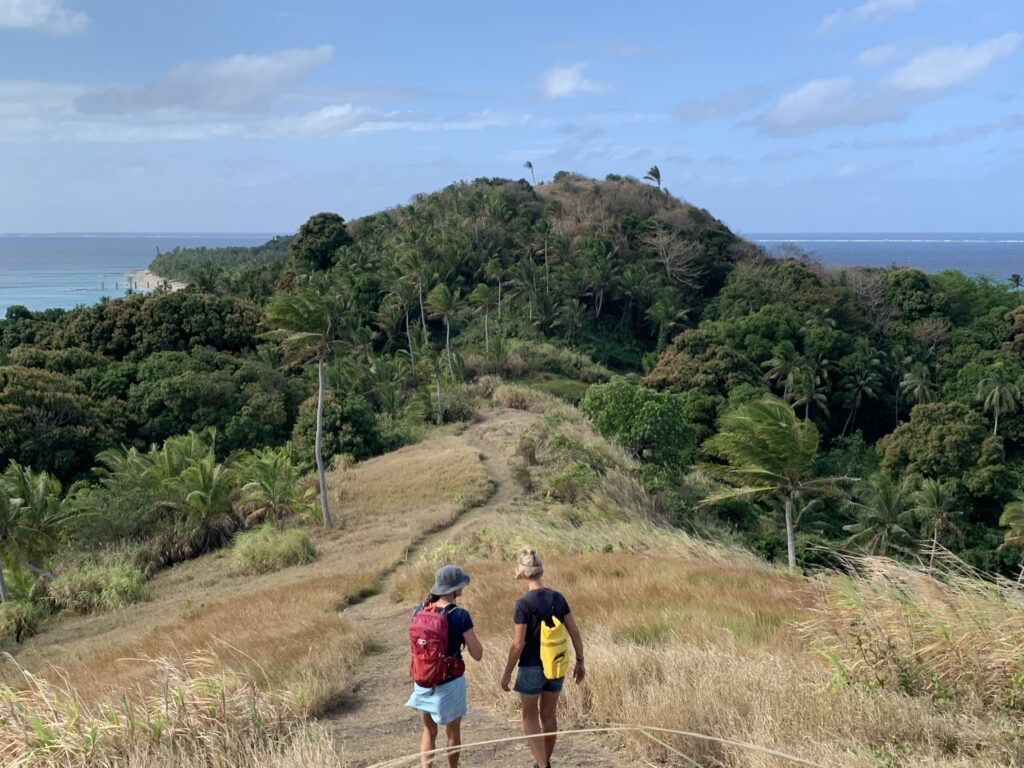
Katrina and Laura hiking along the spine of Dravuni Island
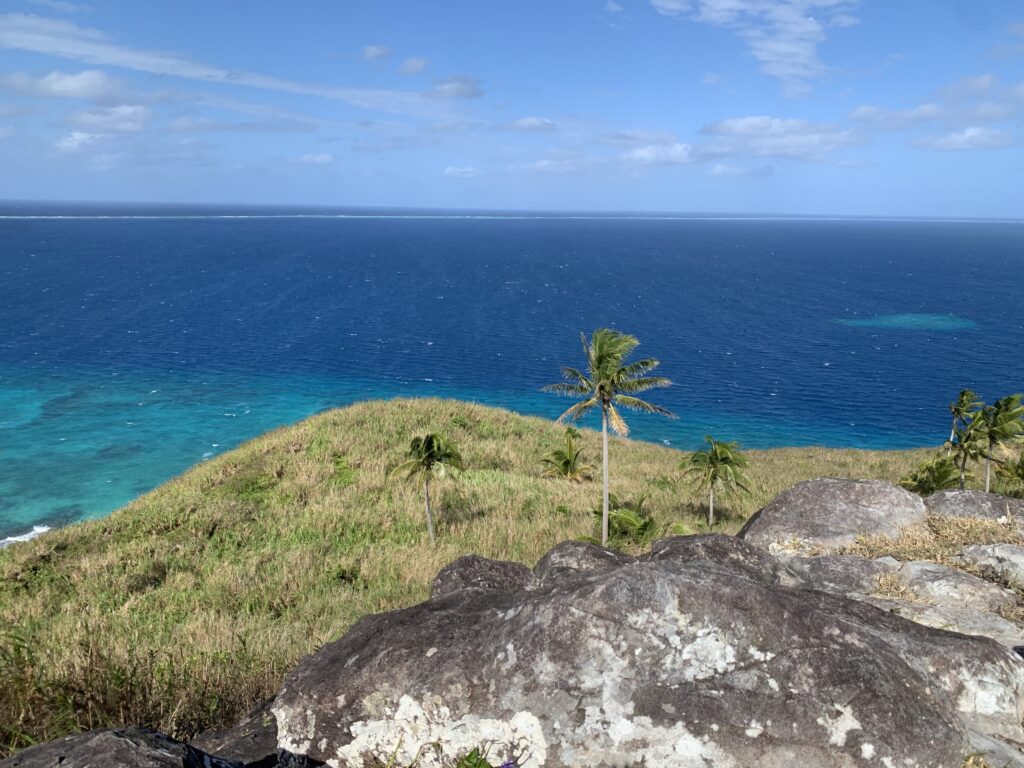
Looking east to the edge of the Great Astrolabe Reef
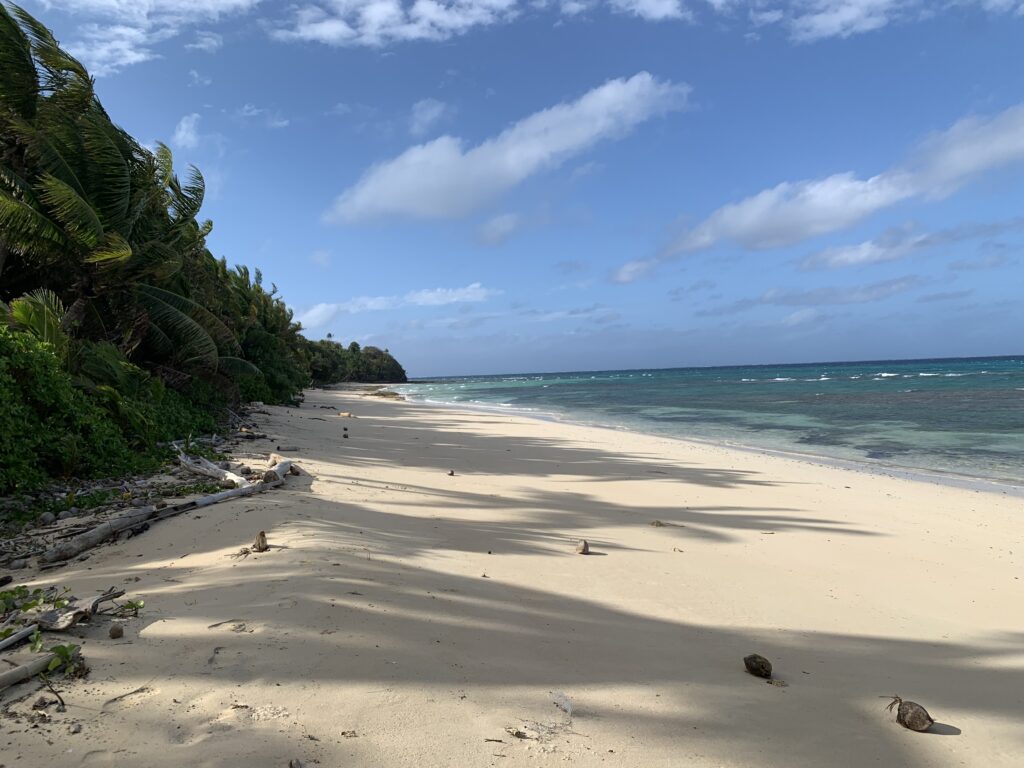
The beach on the windward side of Dravuni Island
On Sunday, Jeff and I did chores. I did a bit of snorkeling in the anchorage with Katrina. And Jeff and I had tea and scones with Ian and Laura on RaLa. It was a very windy night with serious rain. The dinghy was in the water so it couldn’t drain. Three times that night I crawled into the dinghy to bail it out. The rain also came through the mast boot, which we thought had been sealed very well in New Zealand. We added it to the list of things that must be fixed.
On Monday, the skies cleared and the wind started backing down in the afternoon. The cruise ship had come into the anchorage and things were quite busy. All three boats decided to pull up anchor and sail back to Vurolevu Island. The anchorage was less crowded than during our previous visit and we had a nice night.
On Tuesday, Womble and RaLa went diving with the Oneta Resort. Jeff and I took the dinghy and went over to look for mantas. We saw three and of course they were magical. After we returned to the boat, I checked the anchor and realized that the chain was wrapped around a coral head and we were much too close to Womble. We had planned to leave the anchorage a bit later, but because of our precarious position, we pulled up the anchor and started heading toward a northwest pass to leave the Great Astrolabe Reef. As we were leaving, the dive boat arrived and passed by us so we could say goodbye to Womble and RaLa.
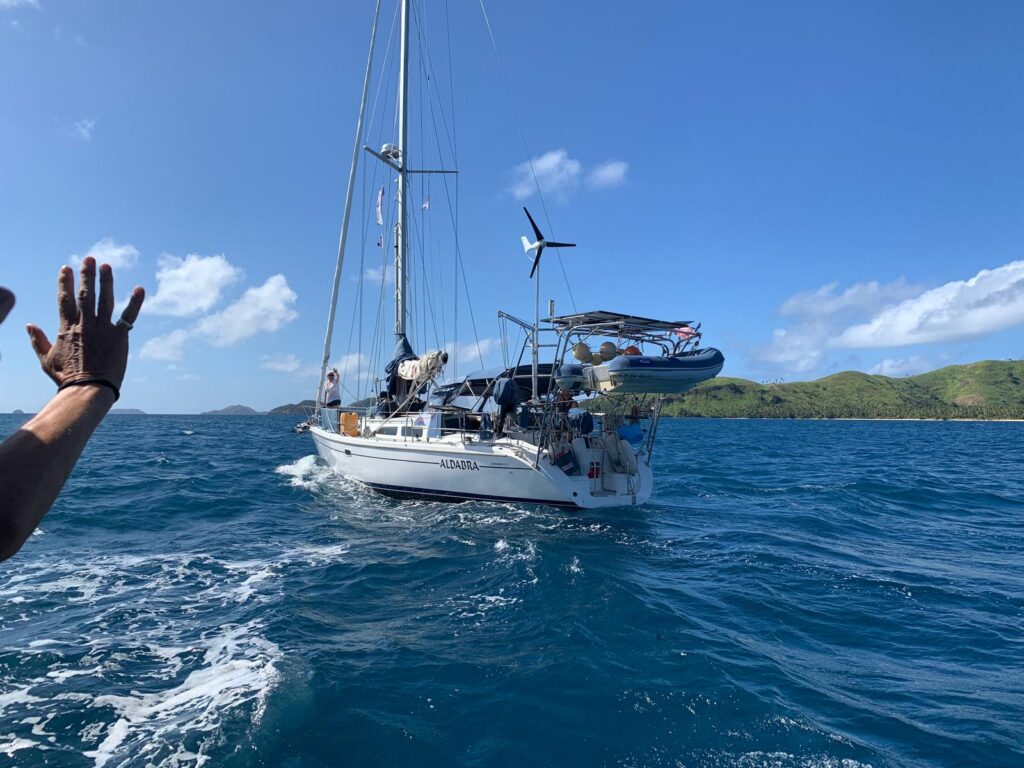
Womble and Rala saying farewall to us as we leave Vurolevu Island
We motored out of Herald Pass and then put up the main with one reef, and the jib. After a few minutes, we put in a second reef in the main. Protected by the reef as we headed west toward the main island of Viti Levu, we could sail comfortably in reasonable seas and wind on a broad reach. Eventually, as we left the protection of the reef, we struggled with big seas and winds from behind that threatened to make us jibe. For the most part, we struggled all night in challenging seas with the stiff rudder.
